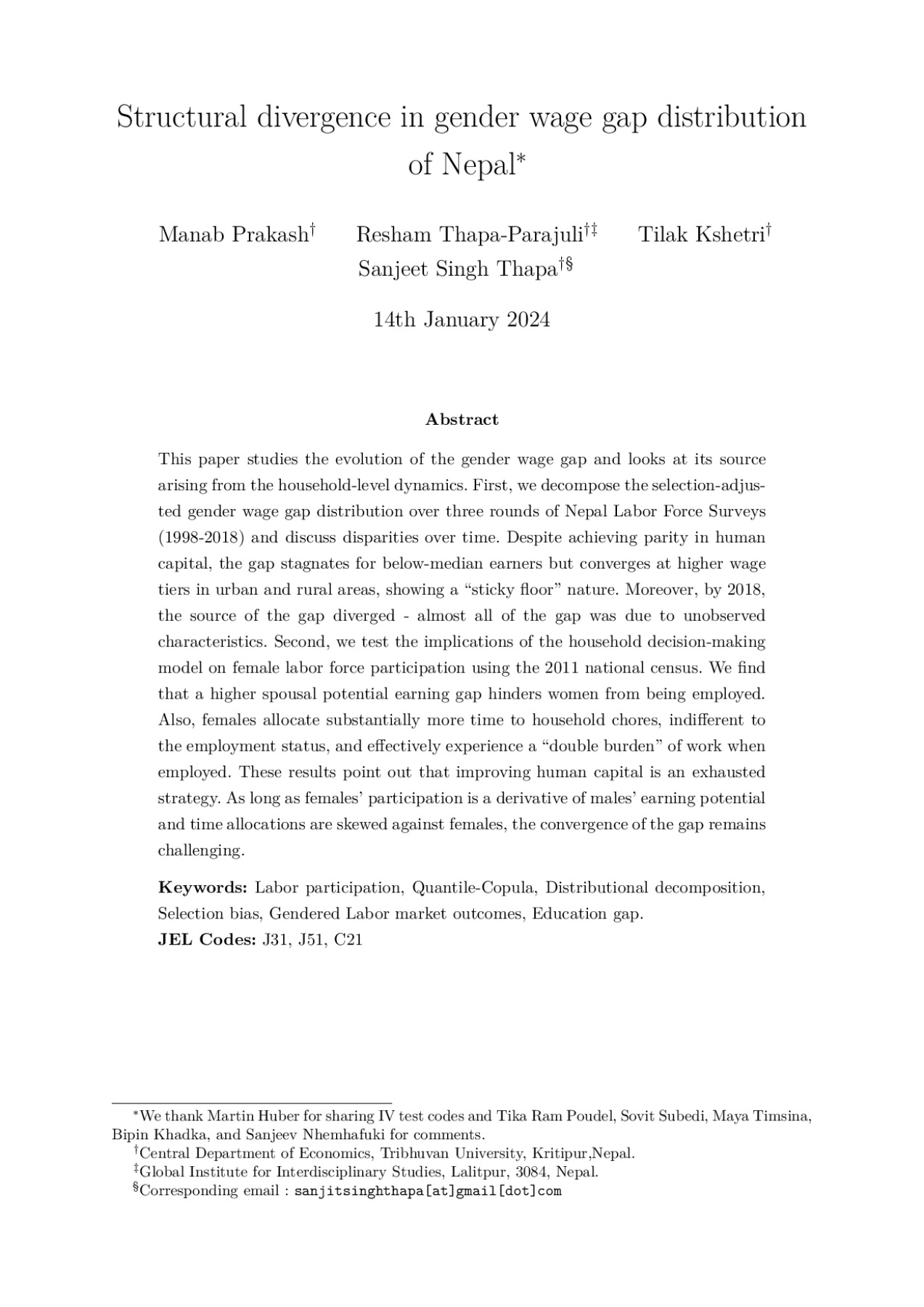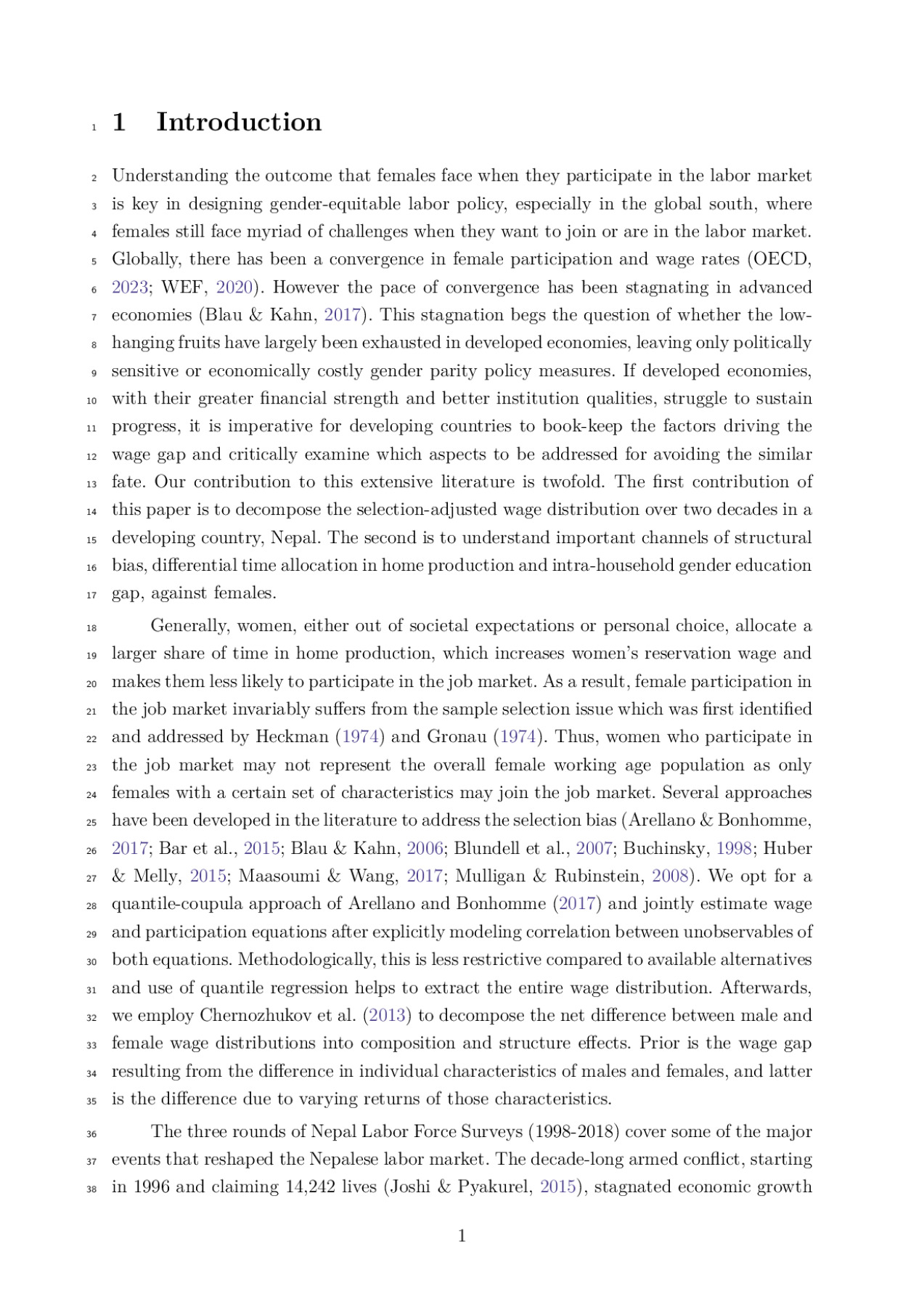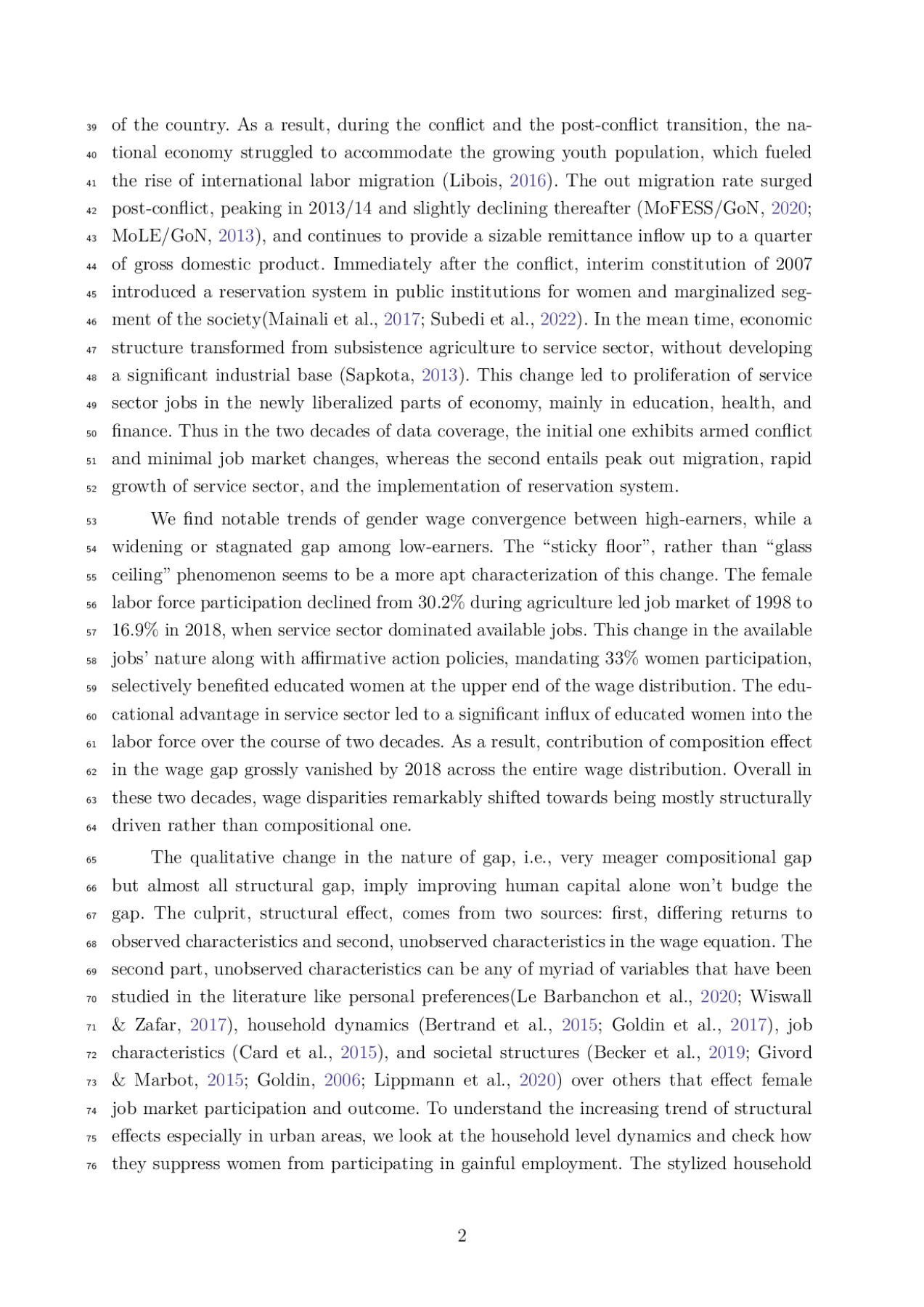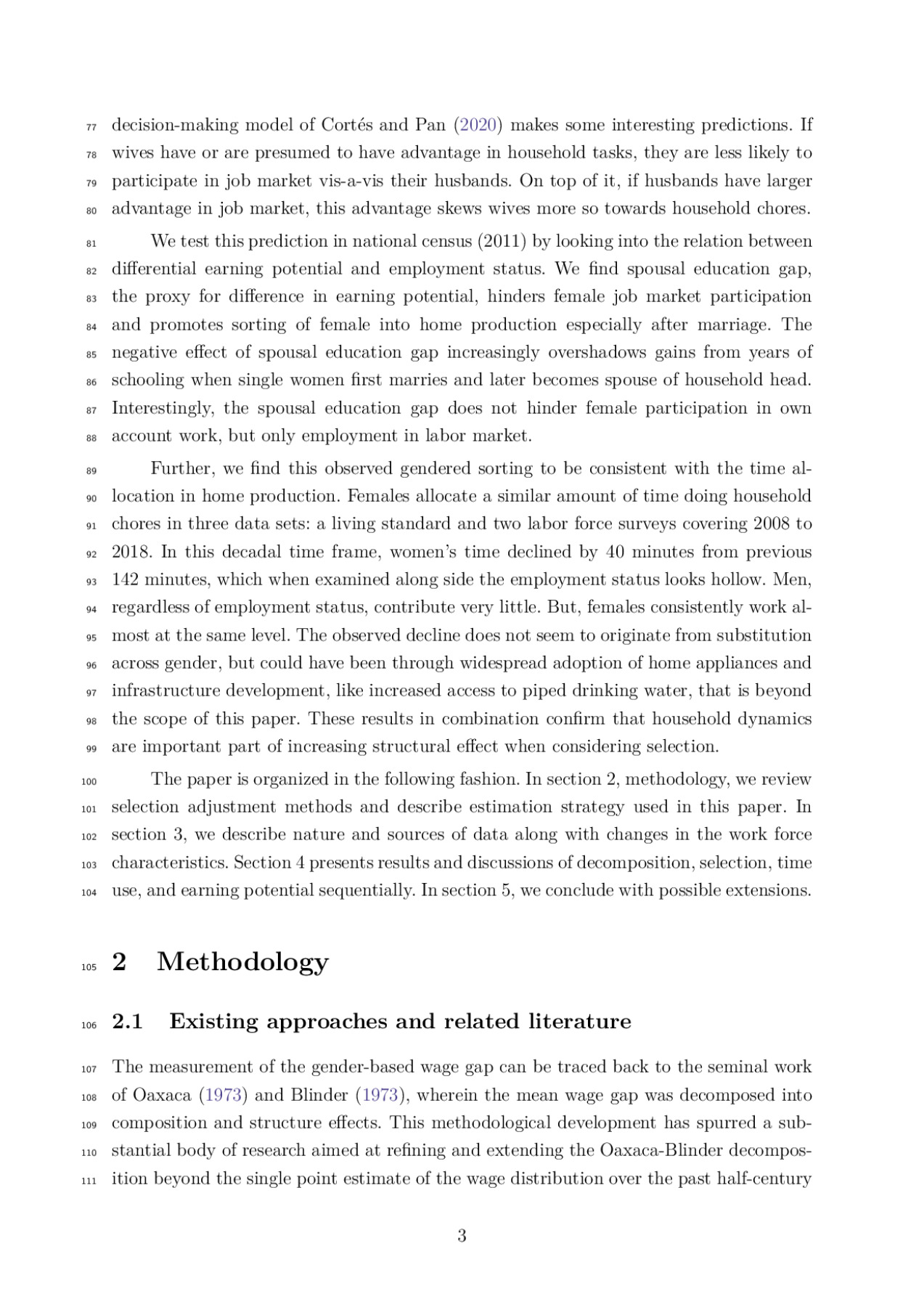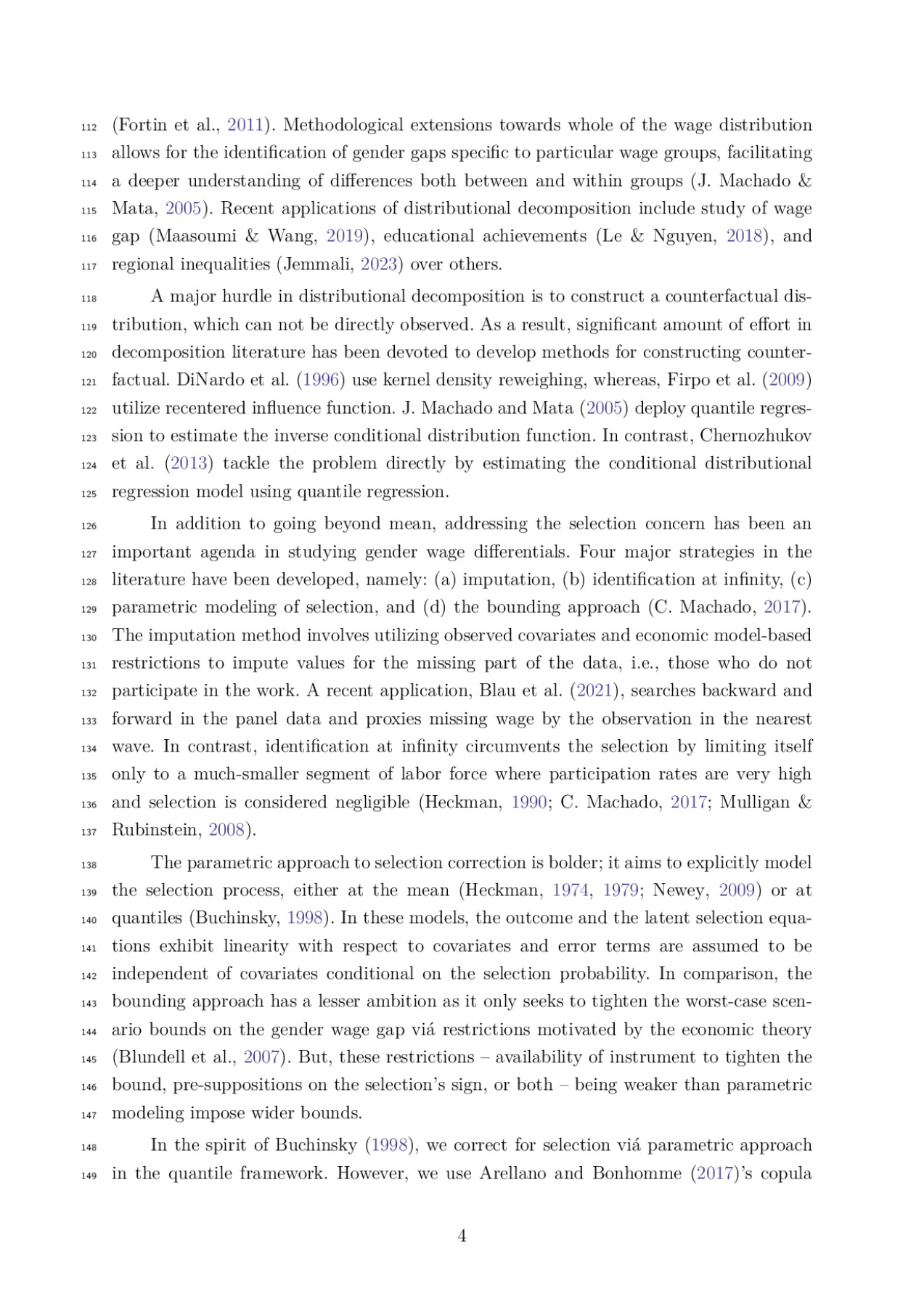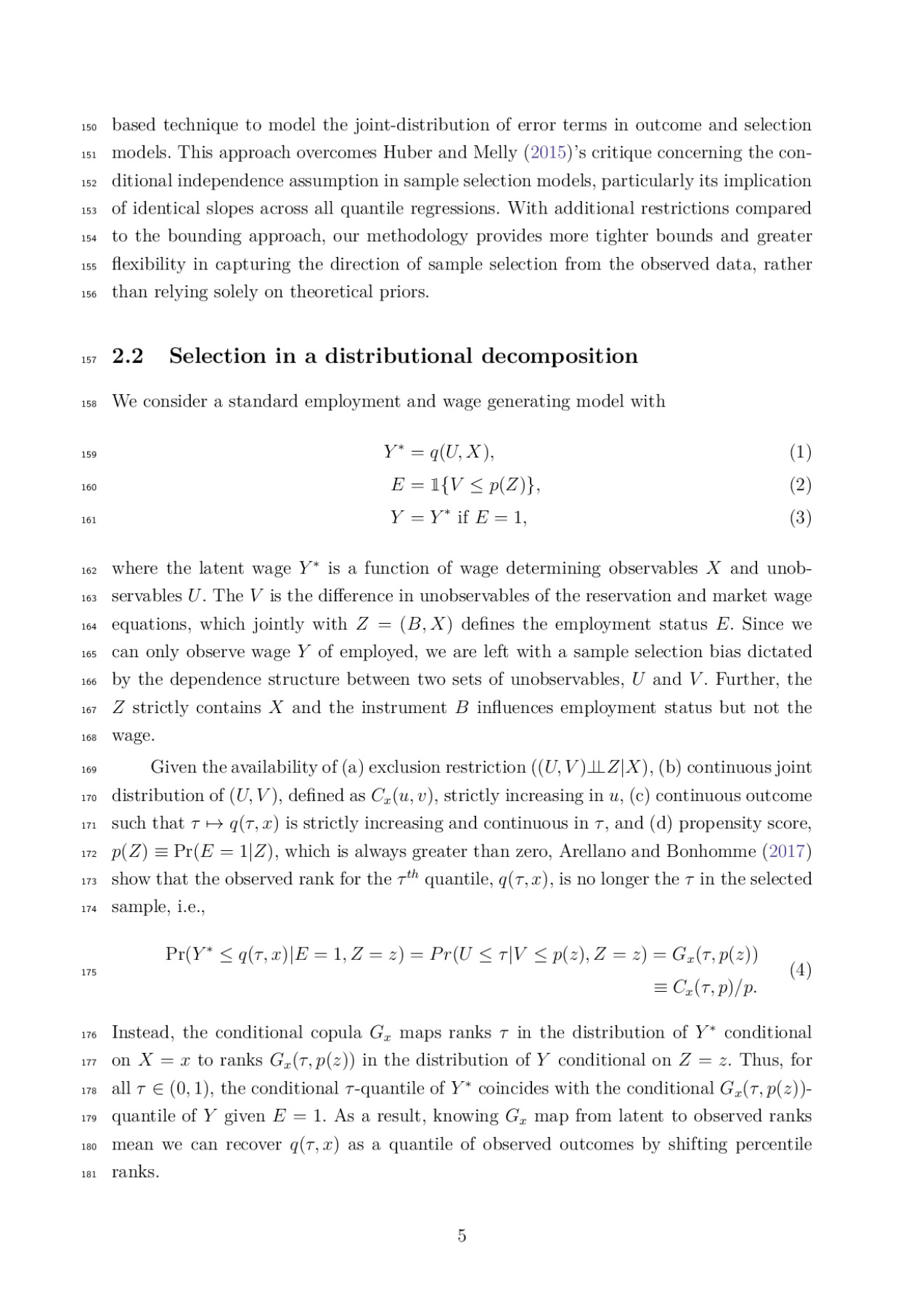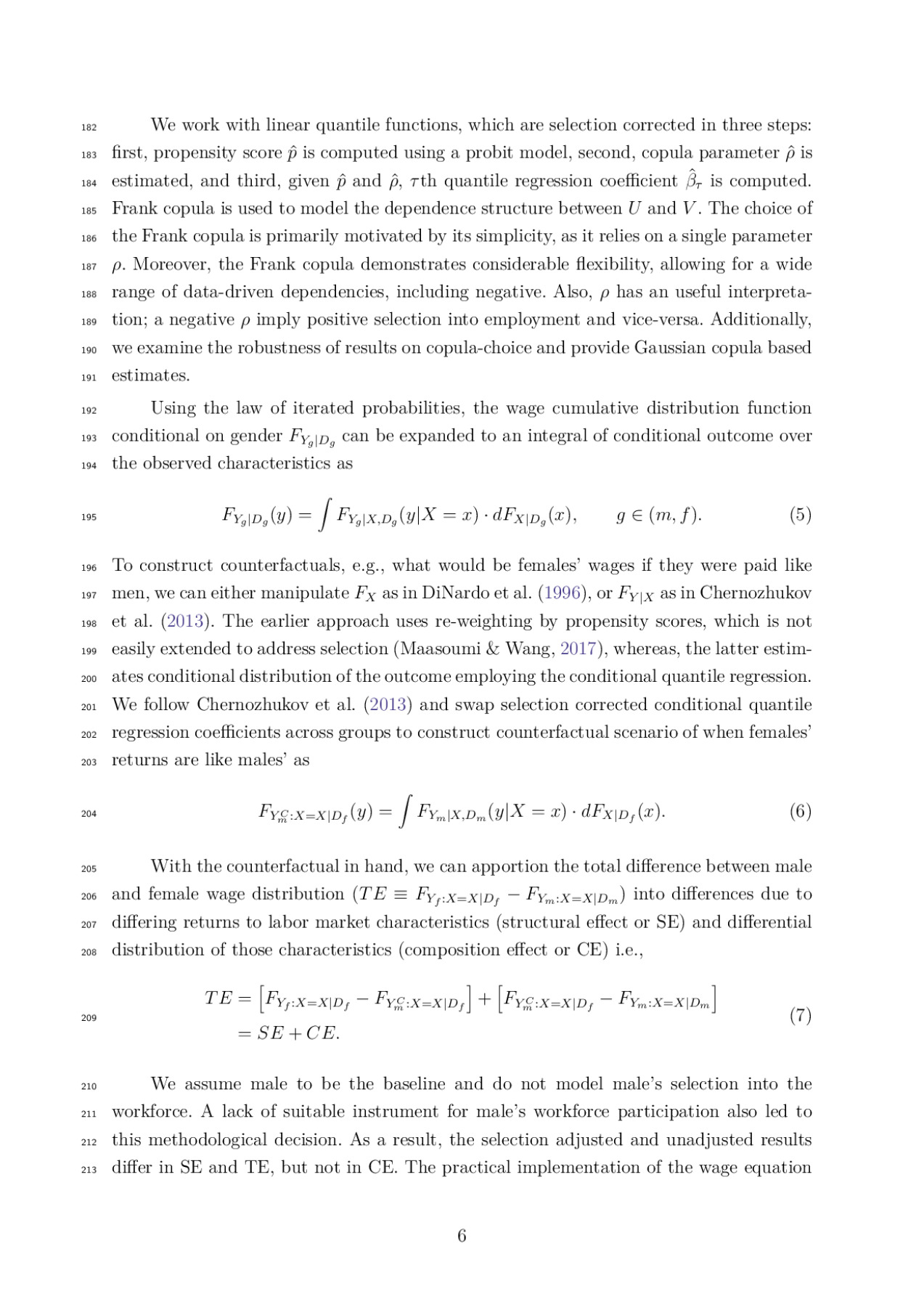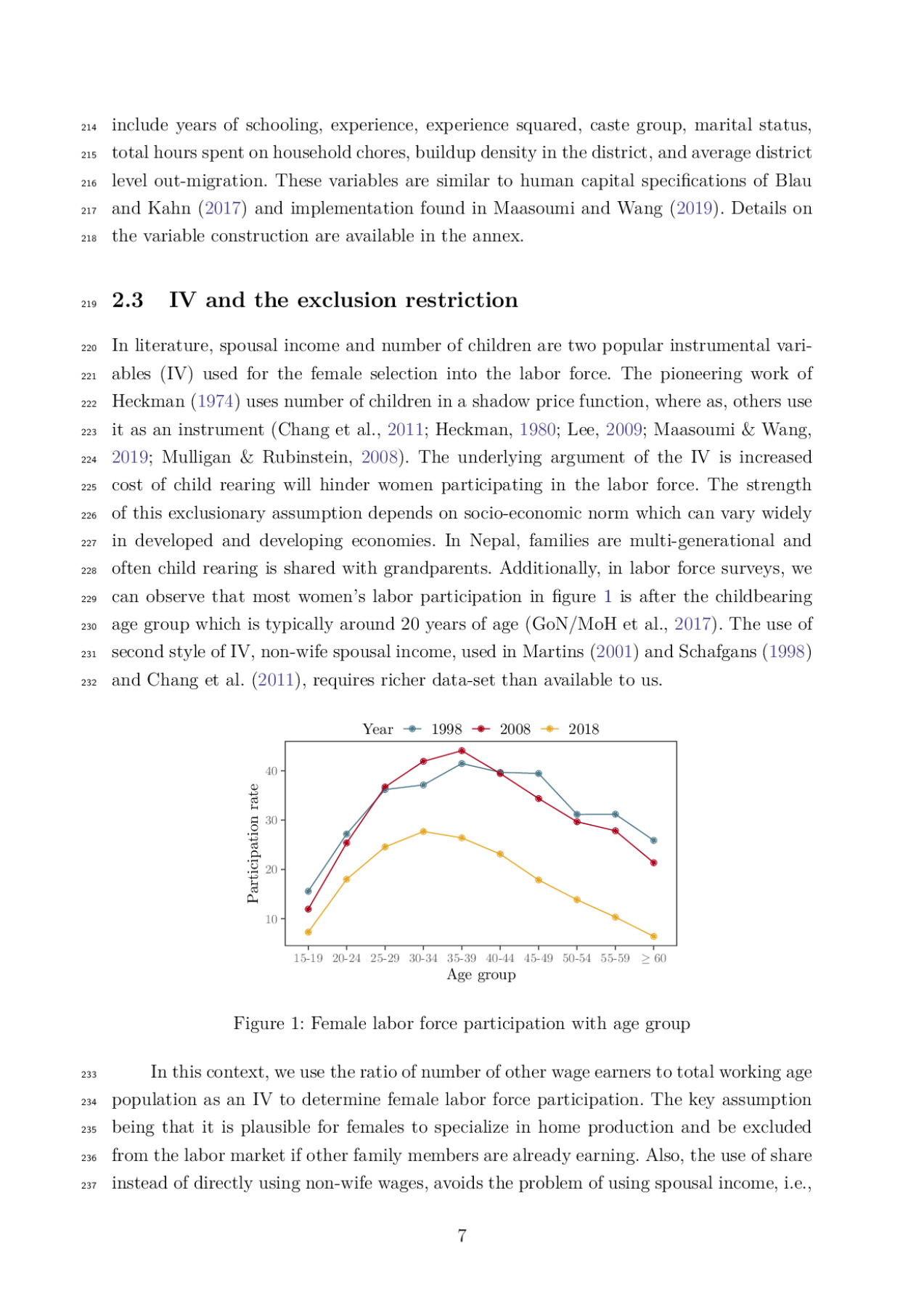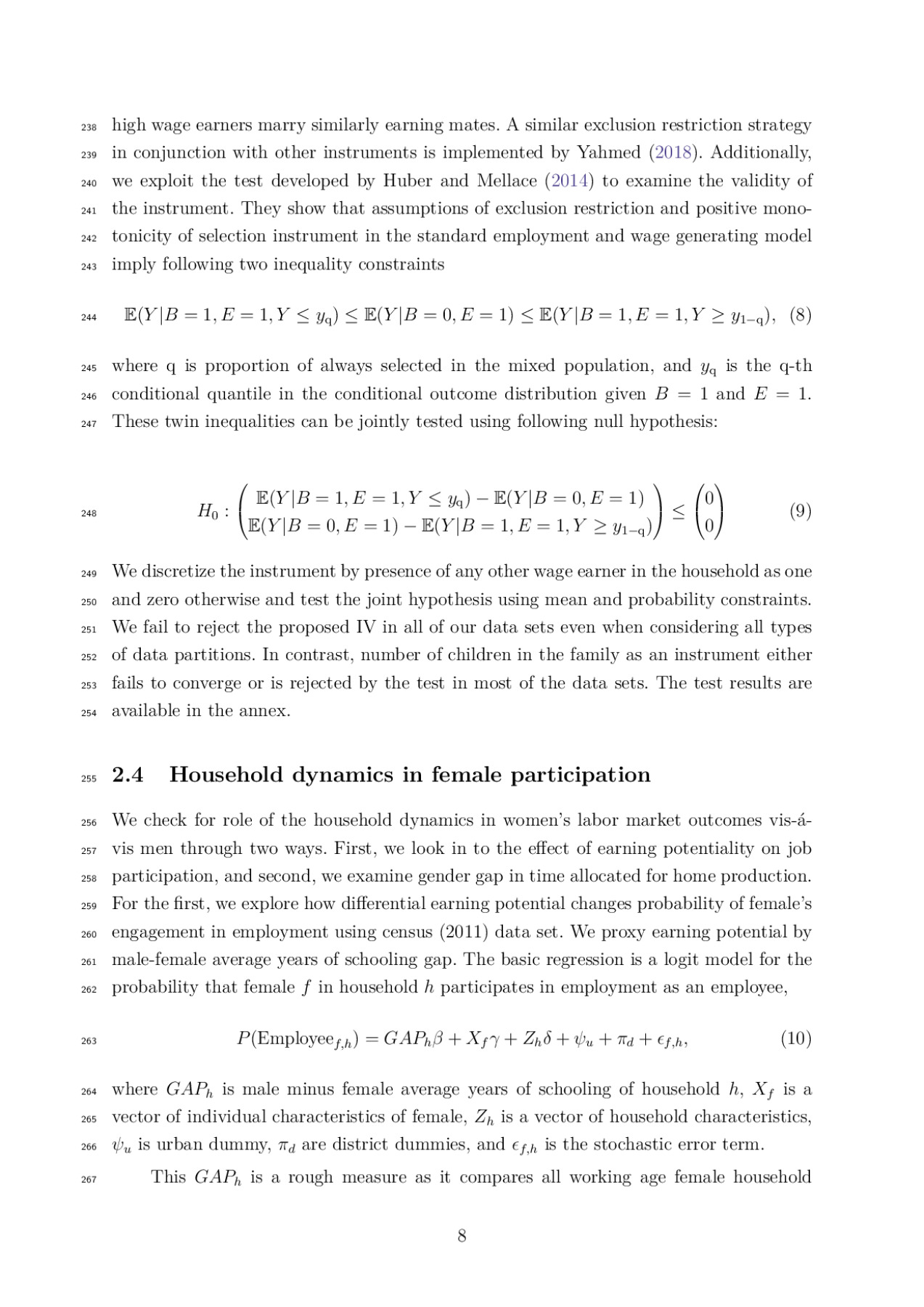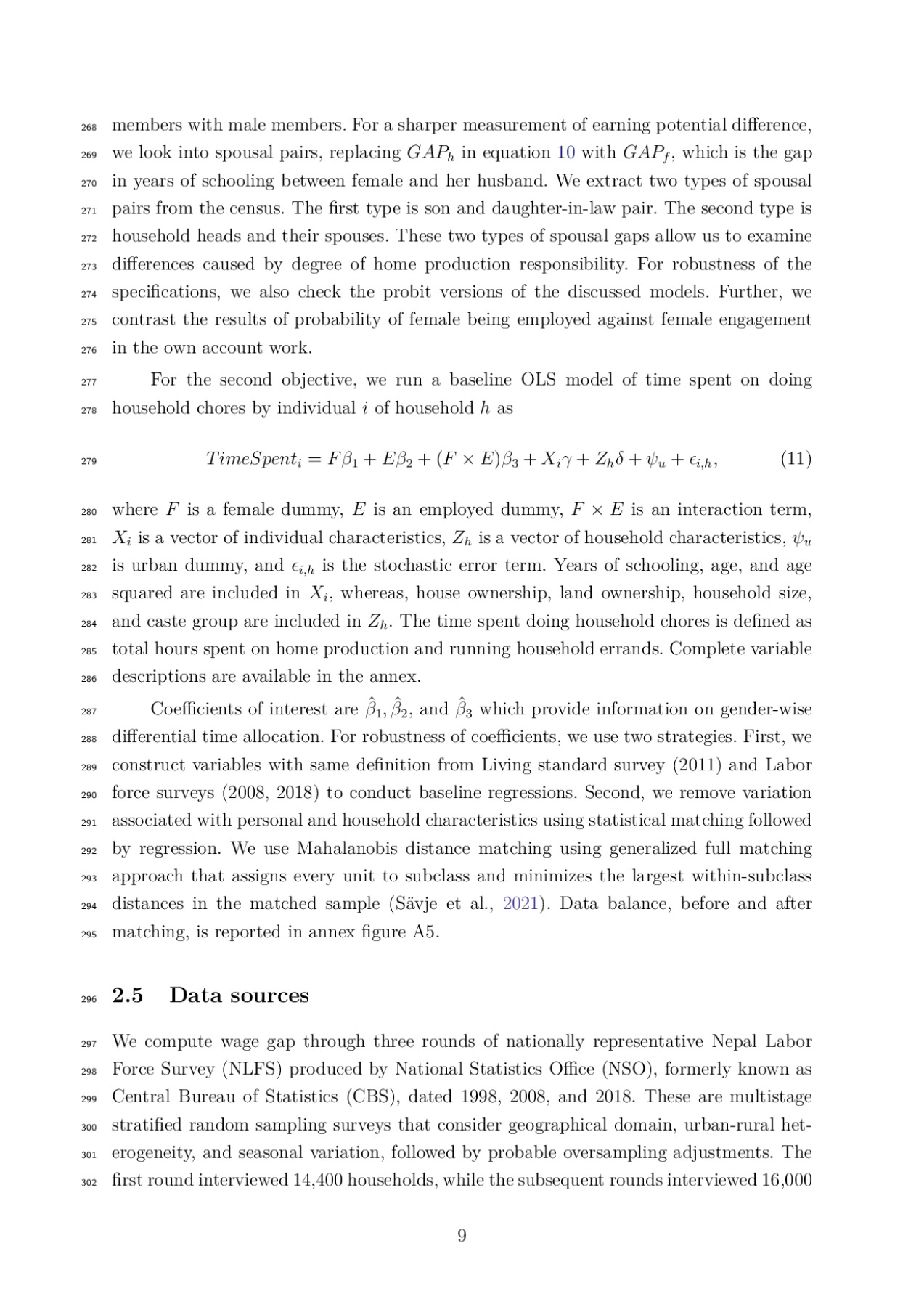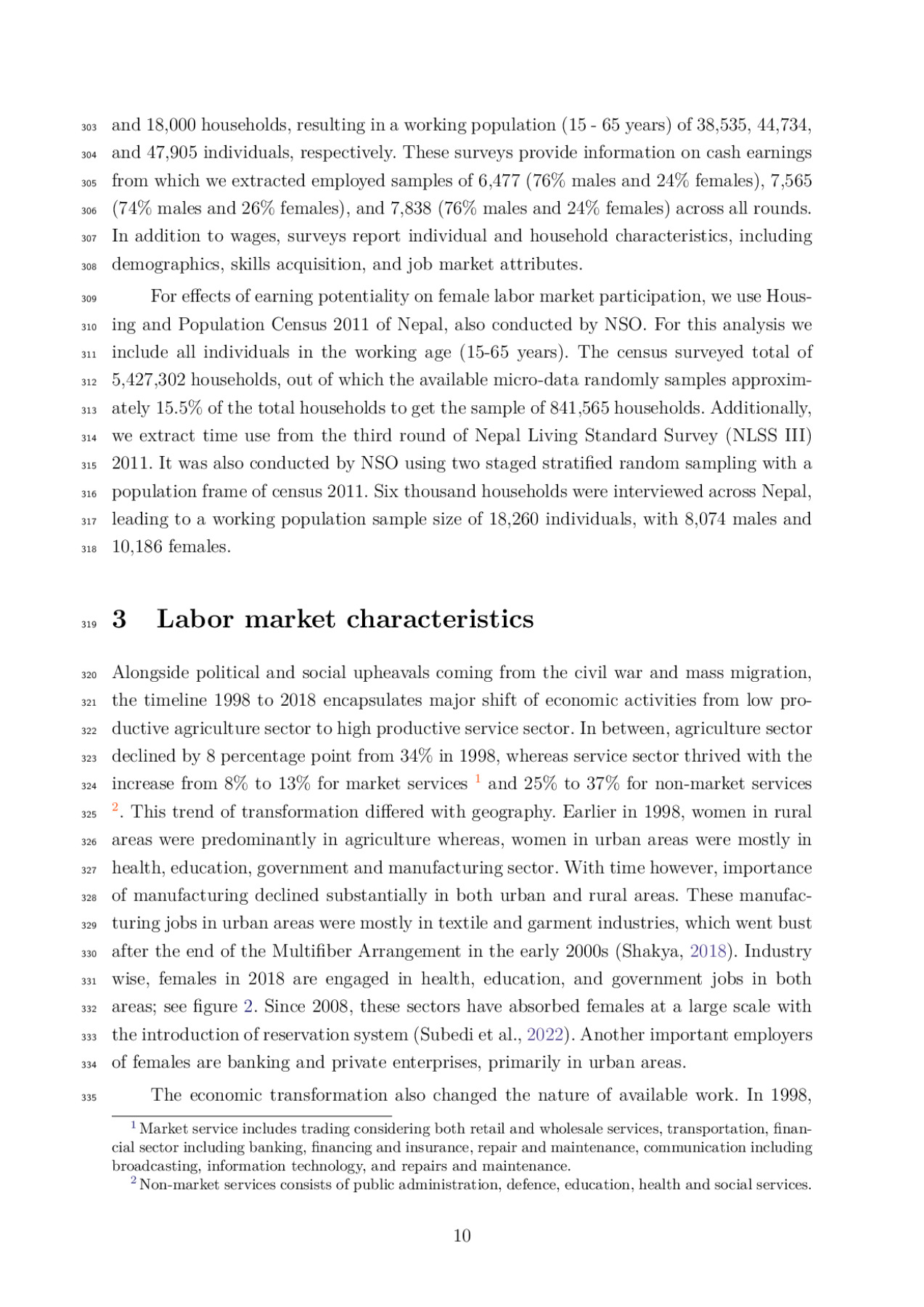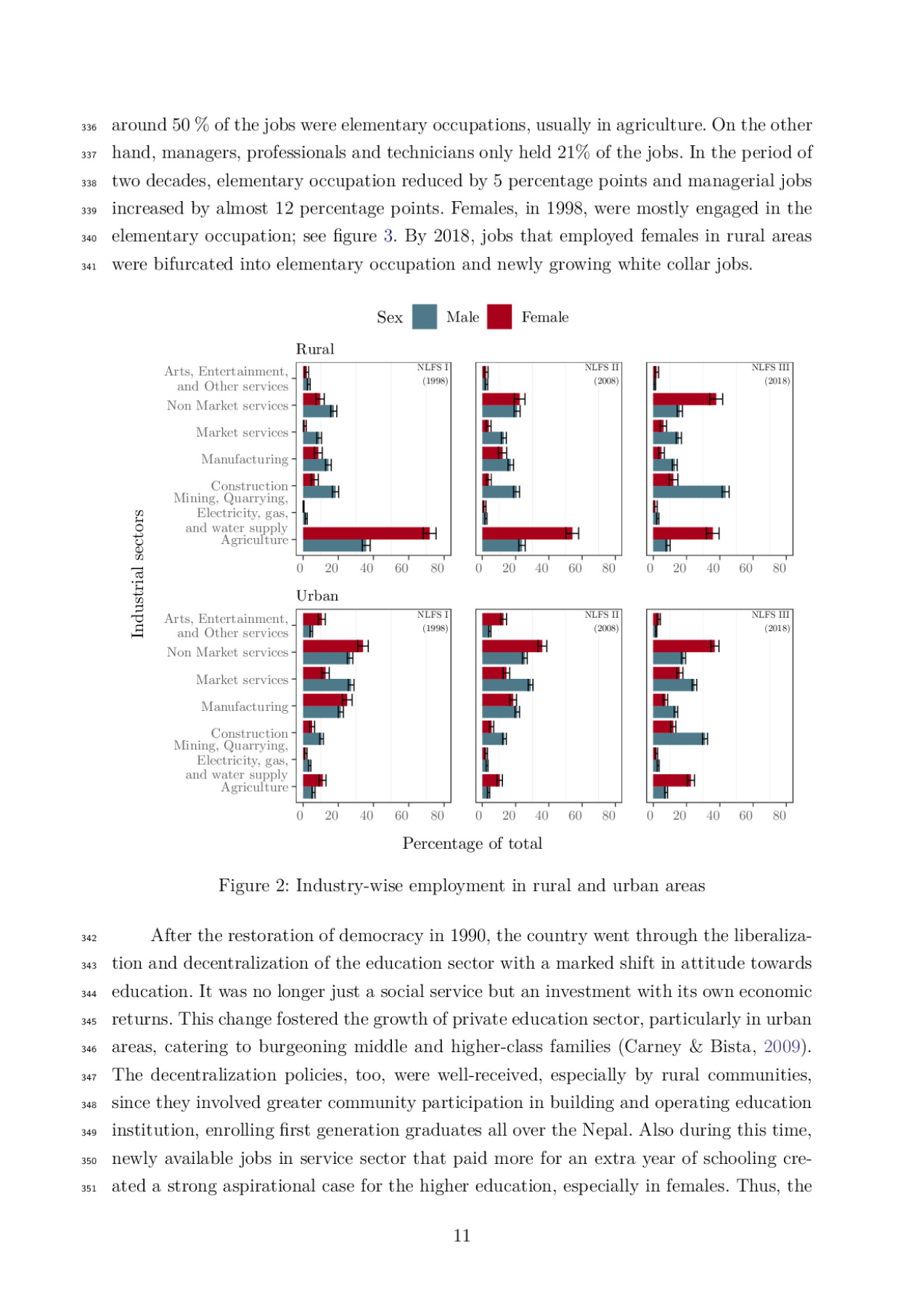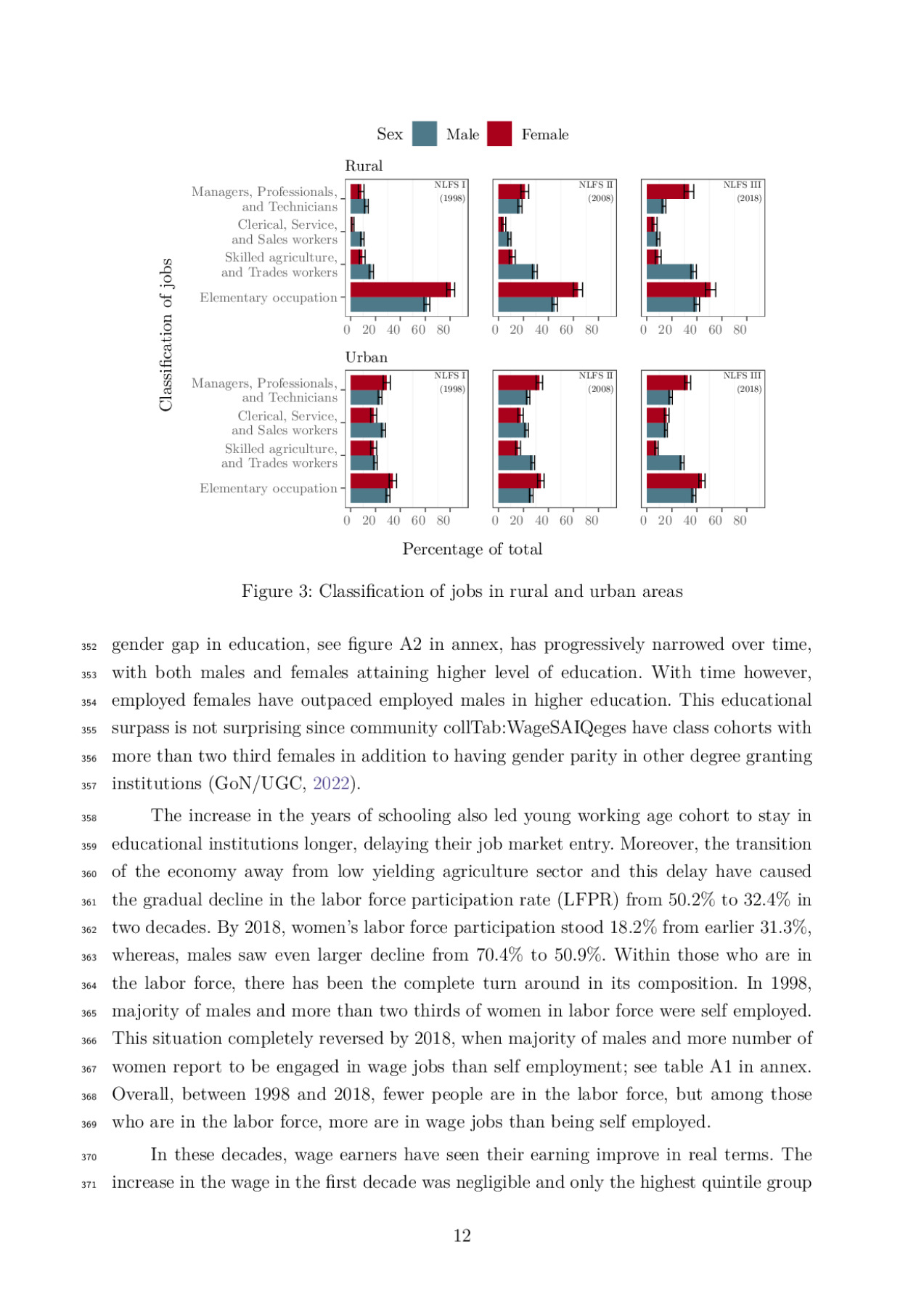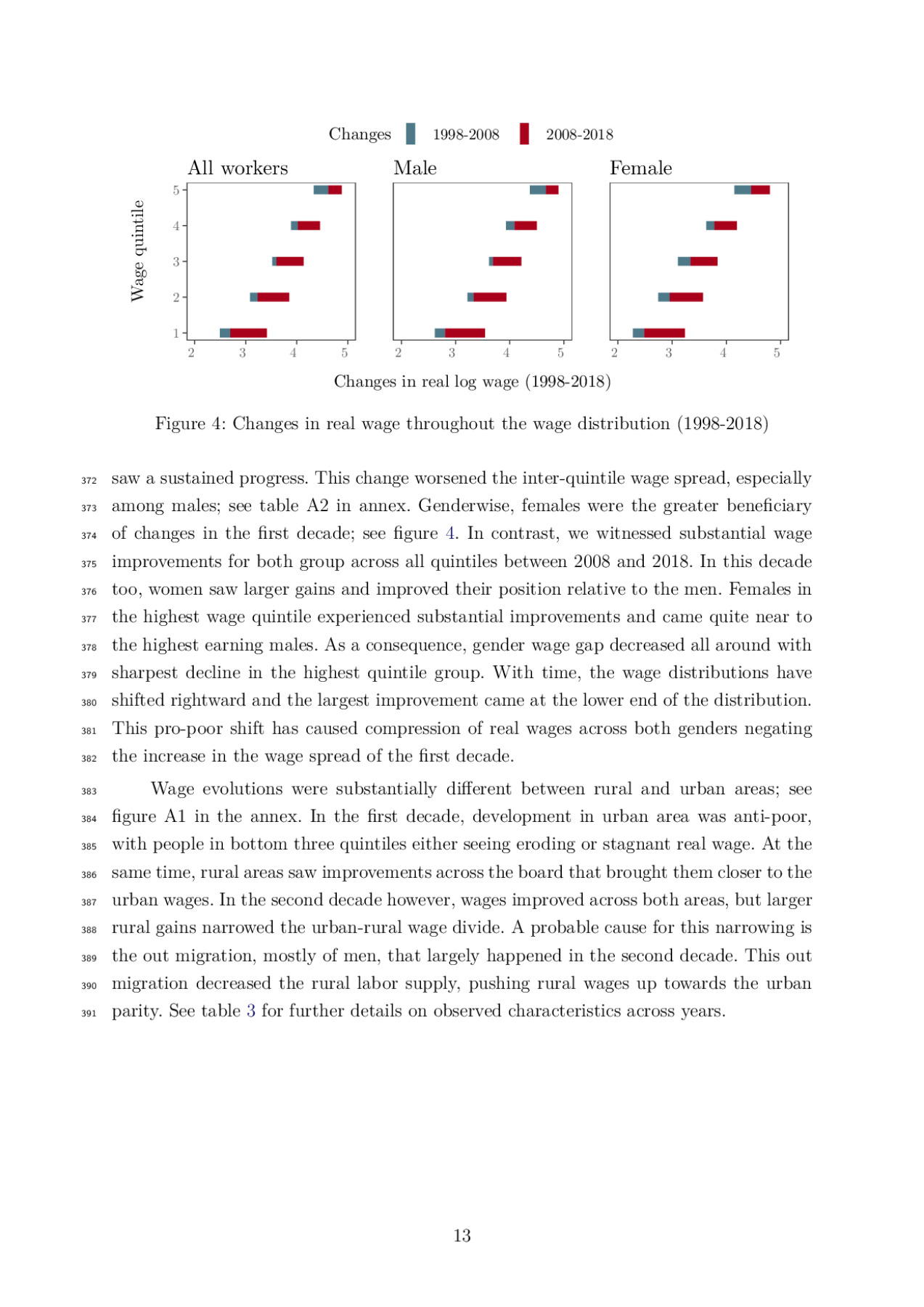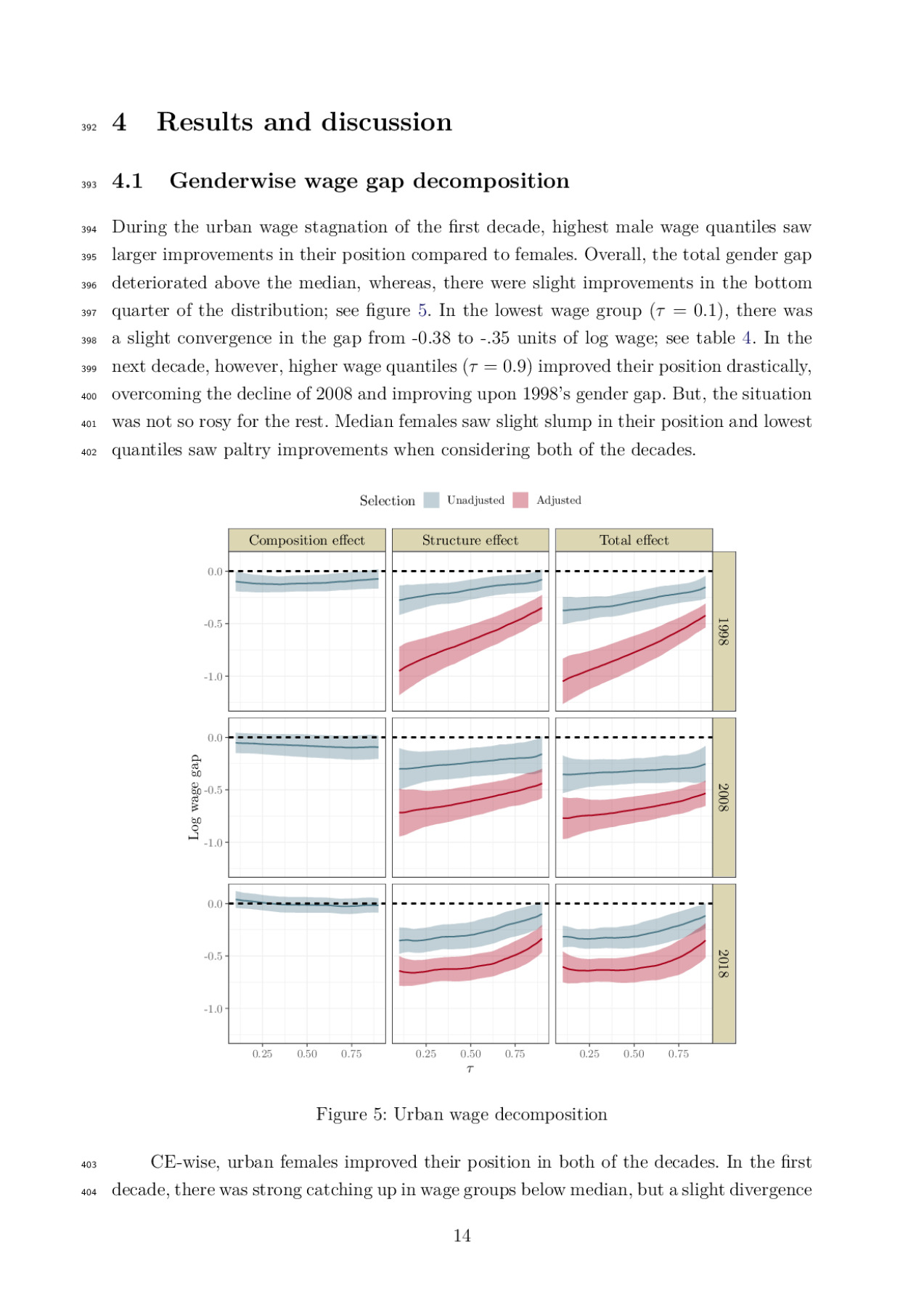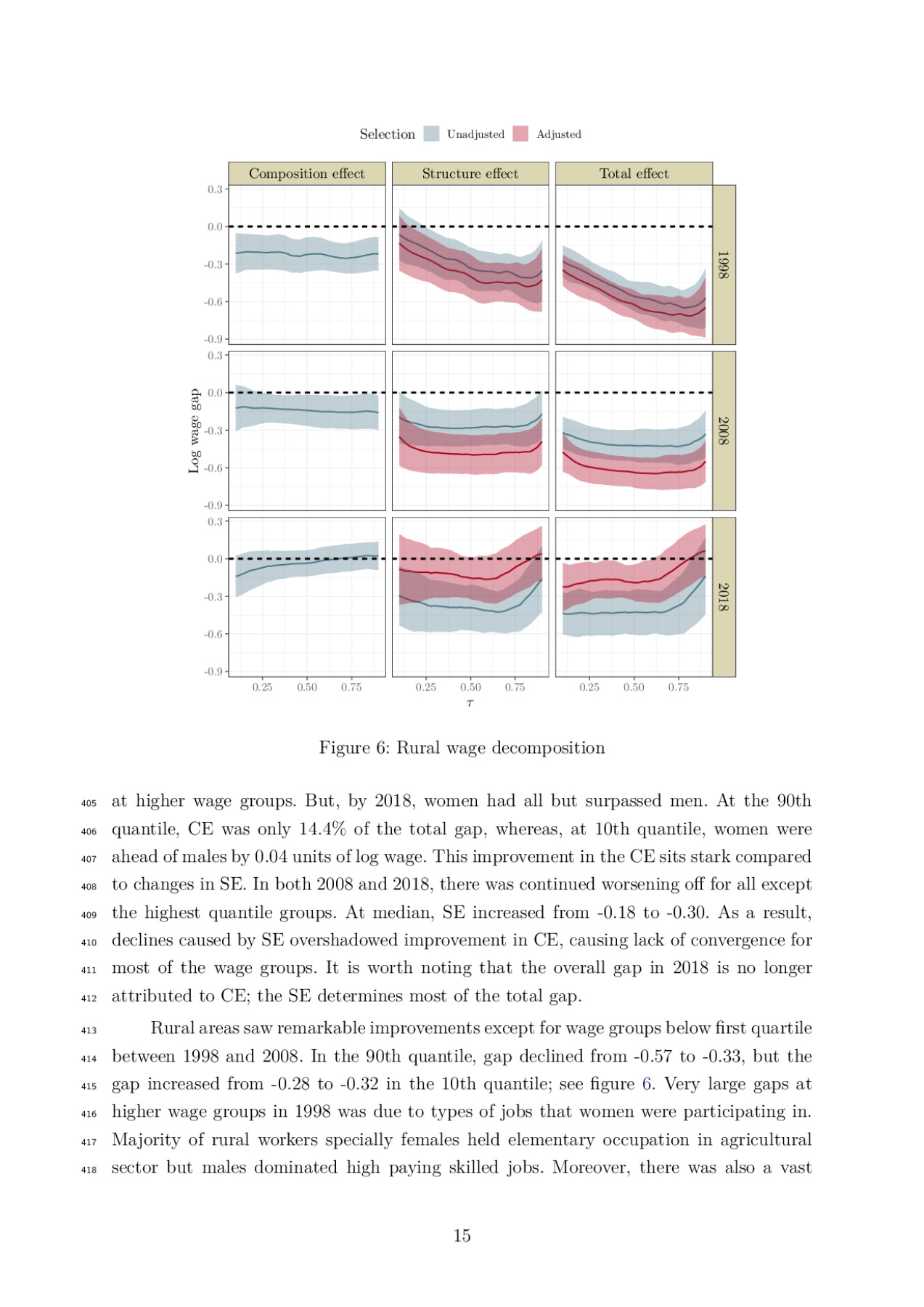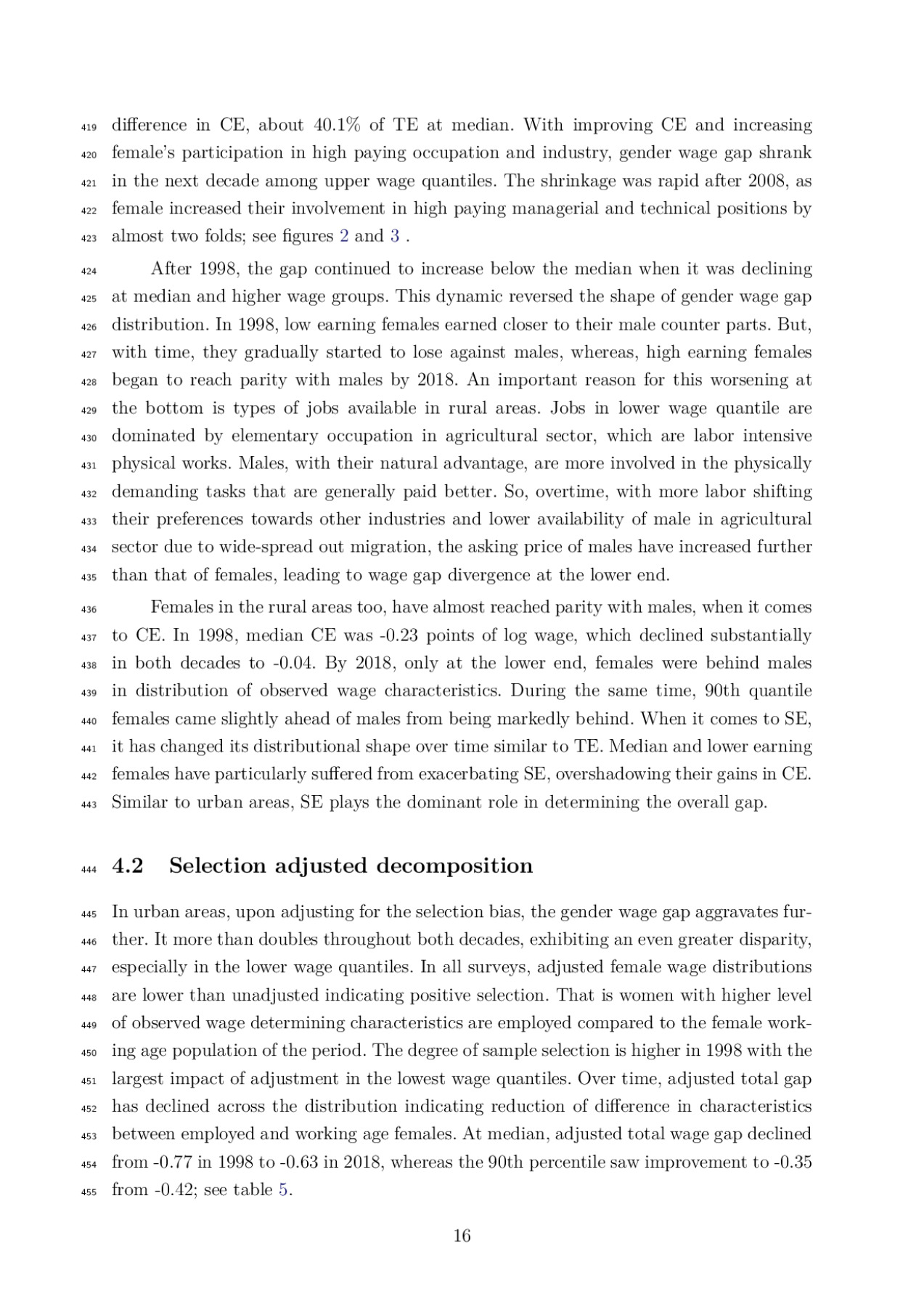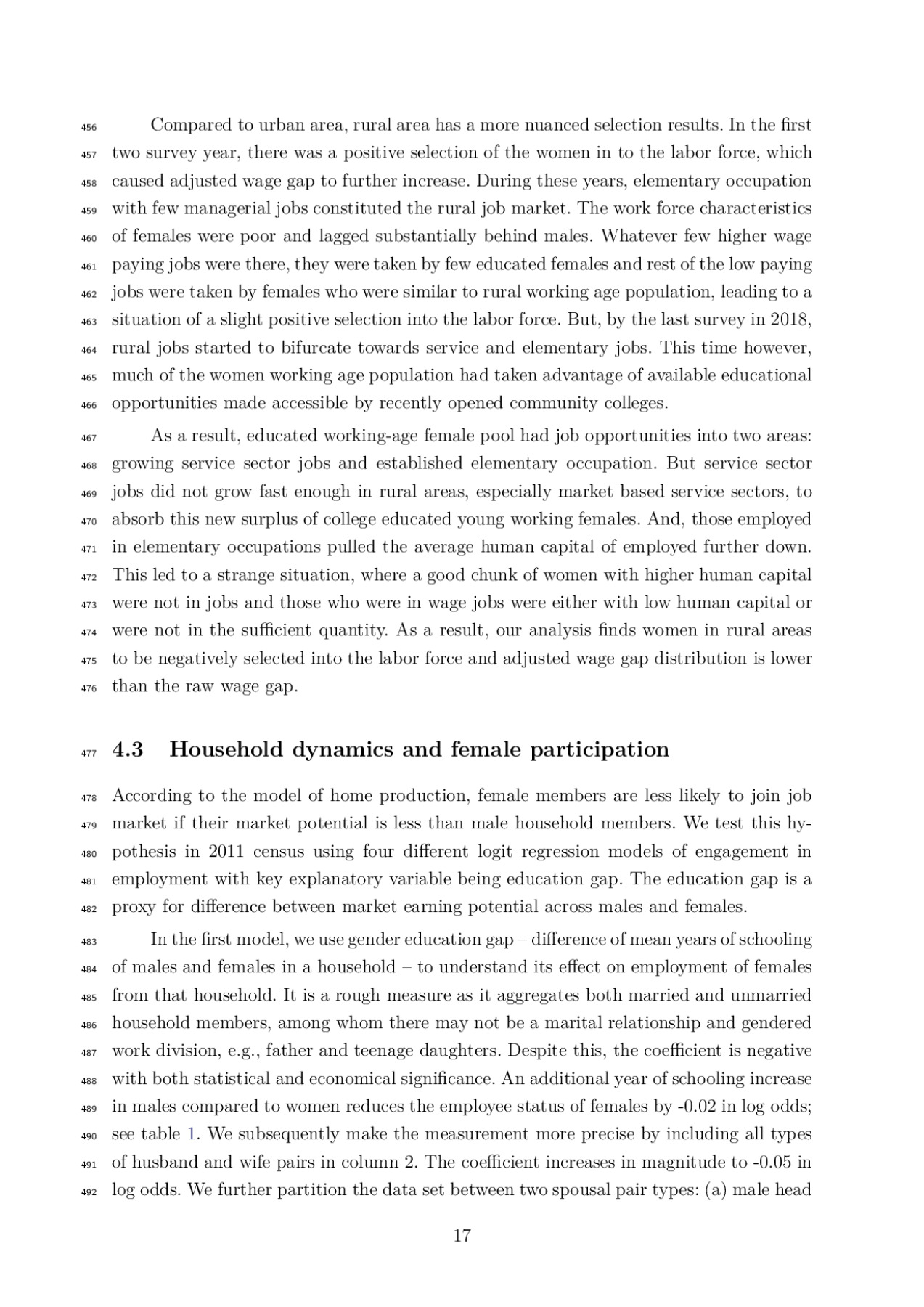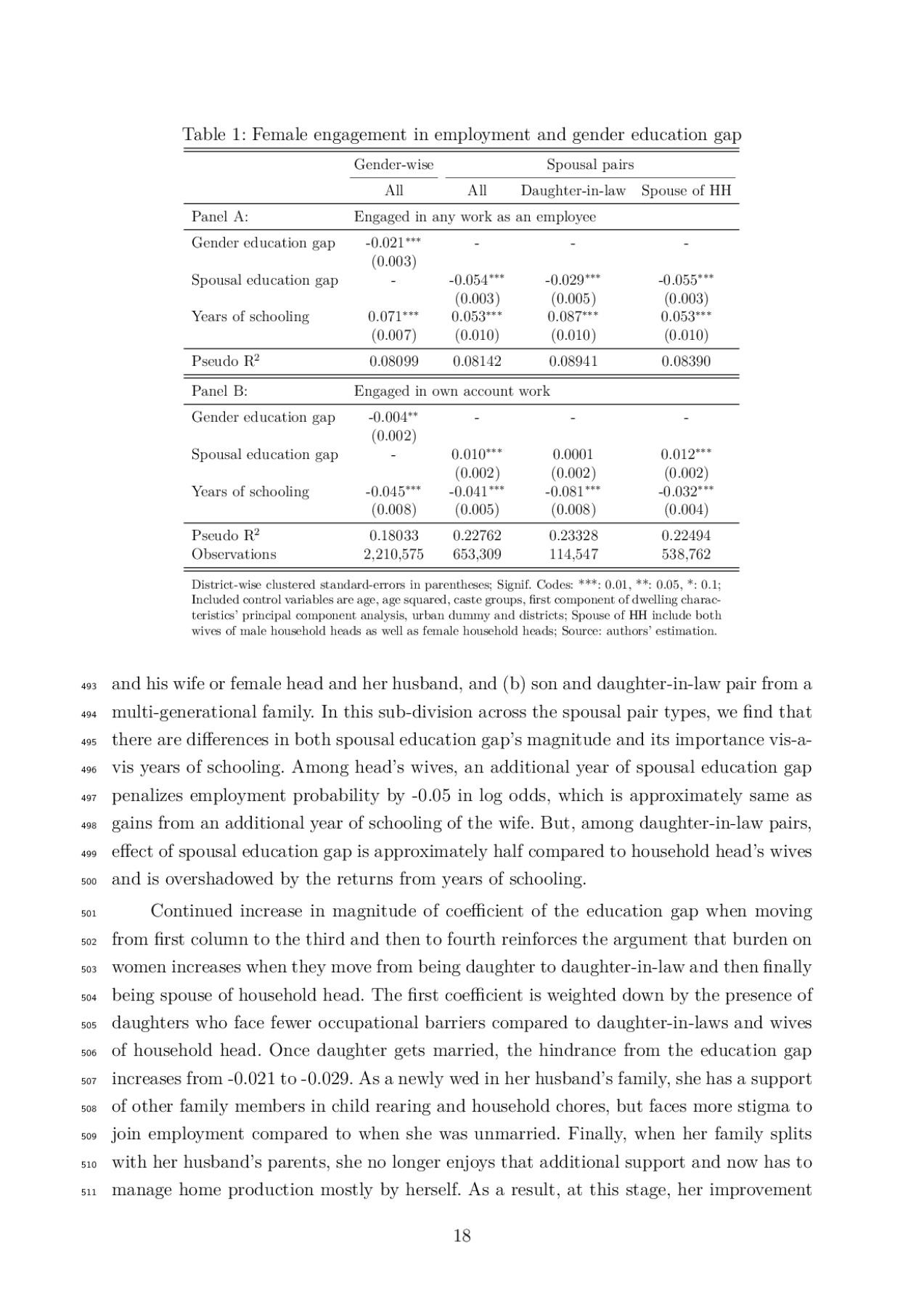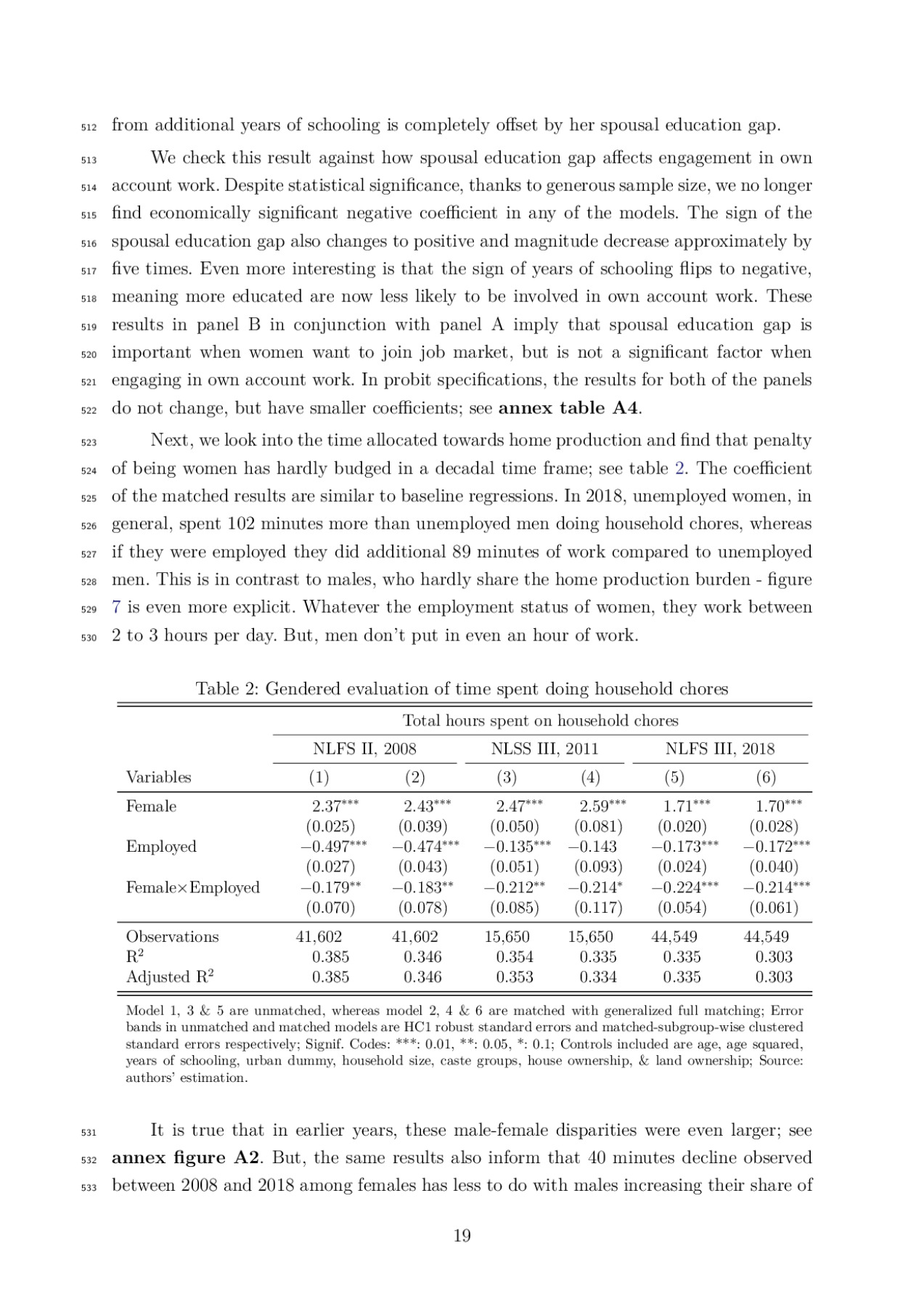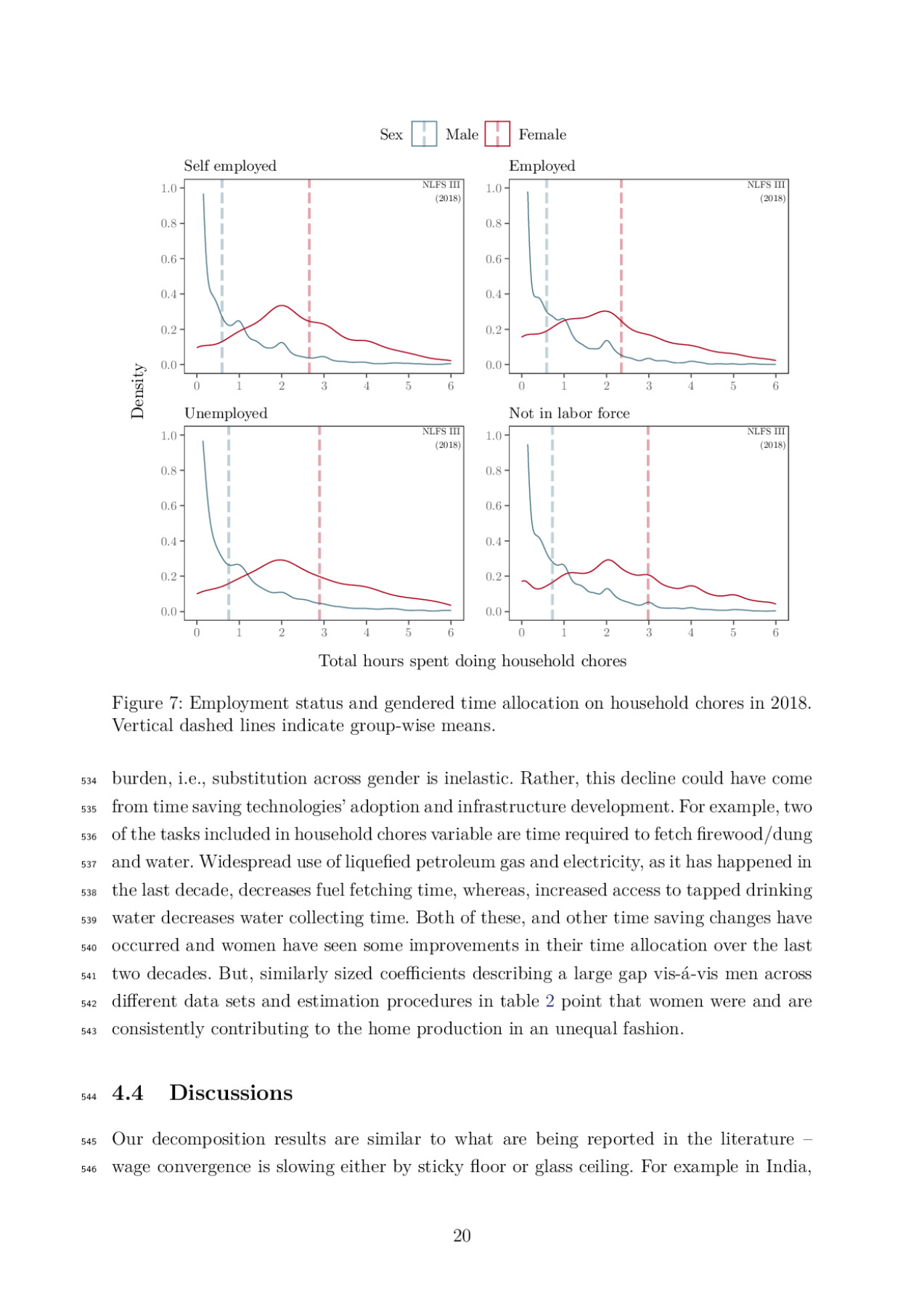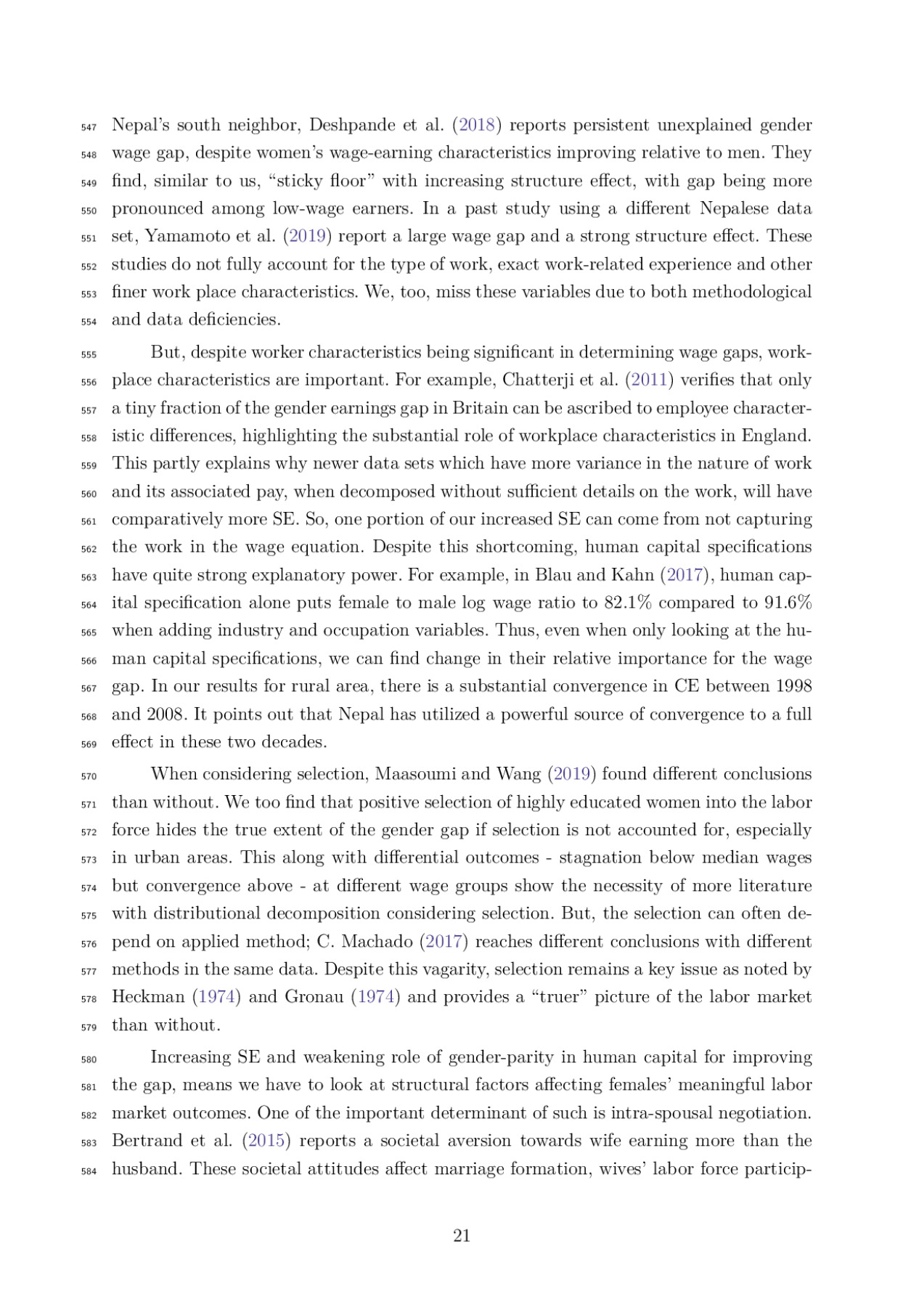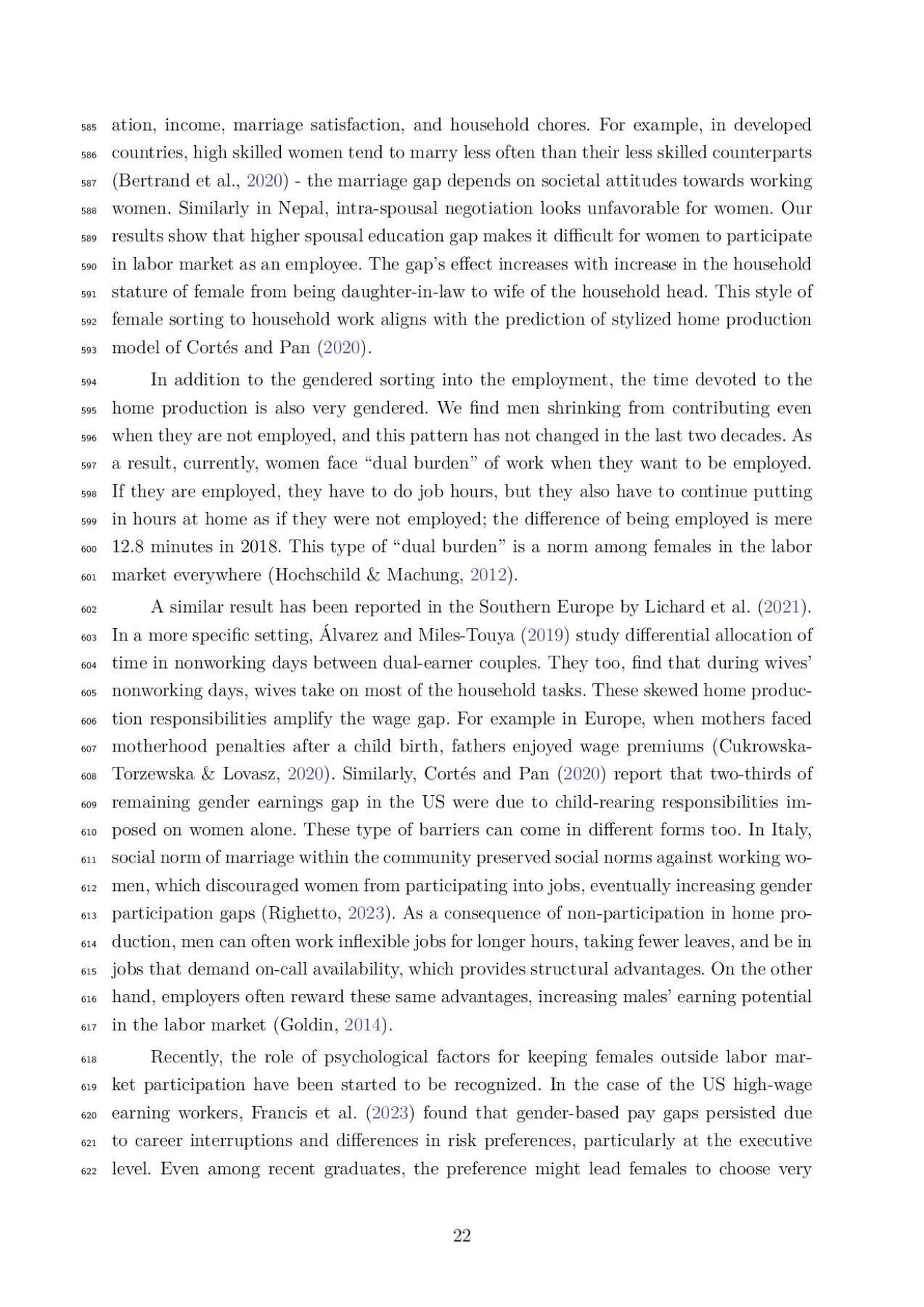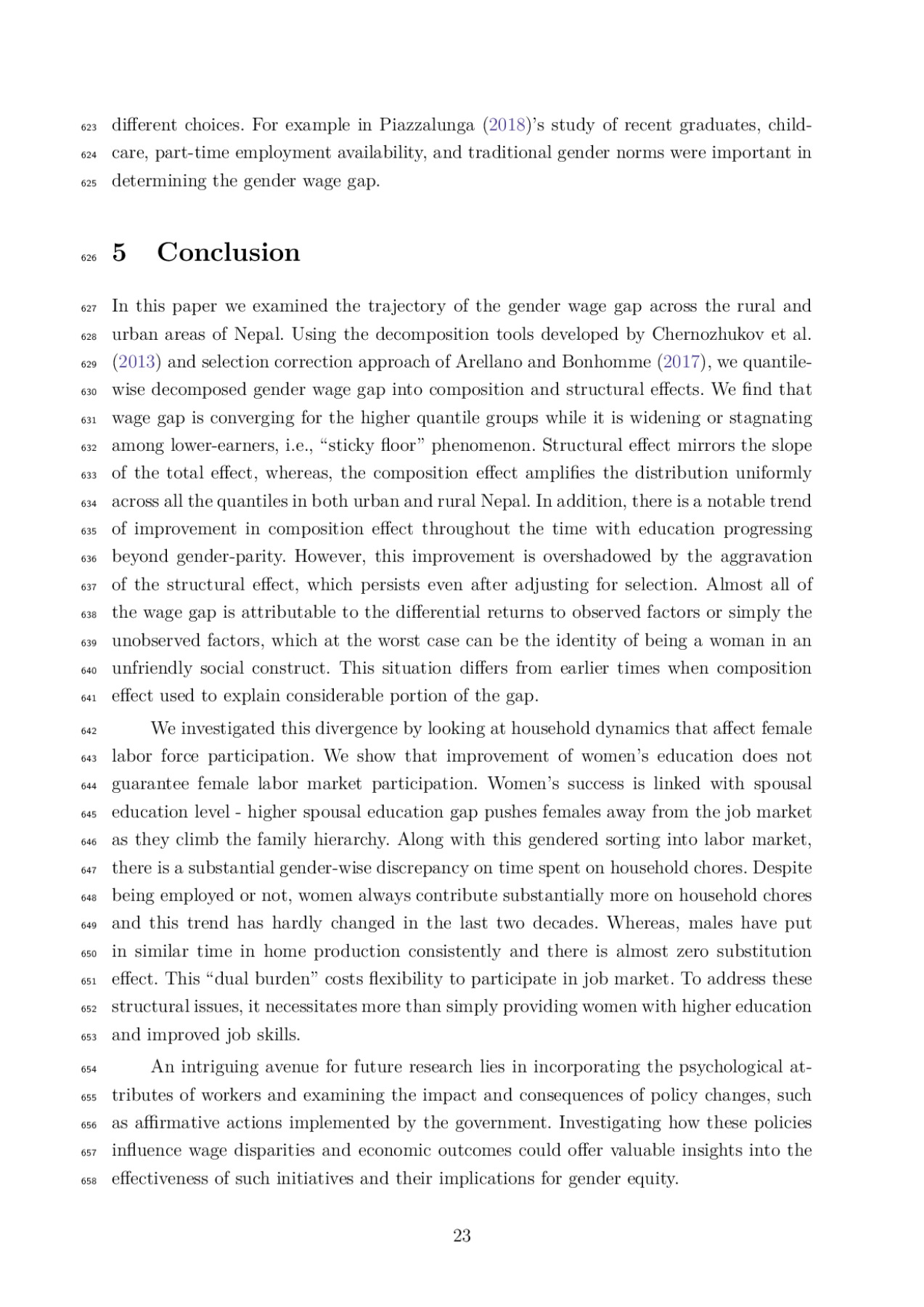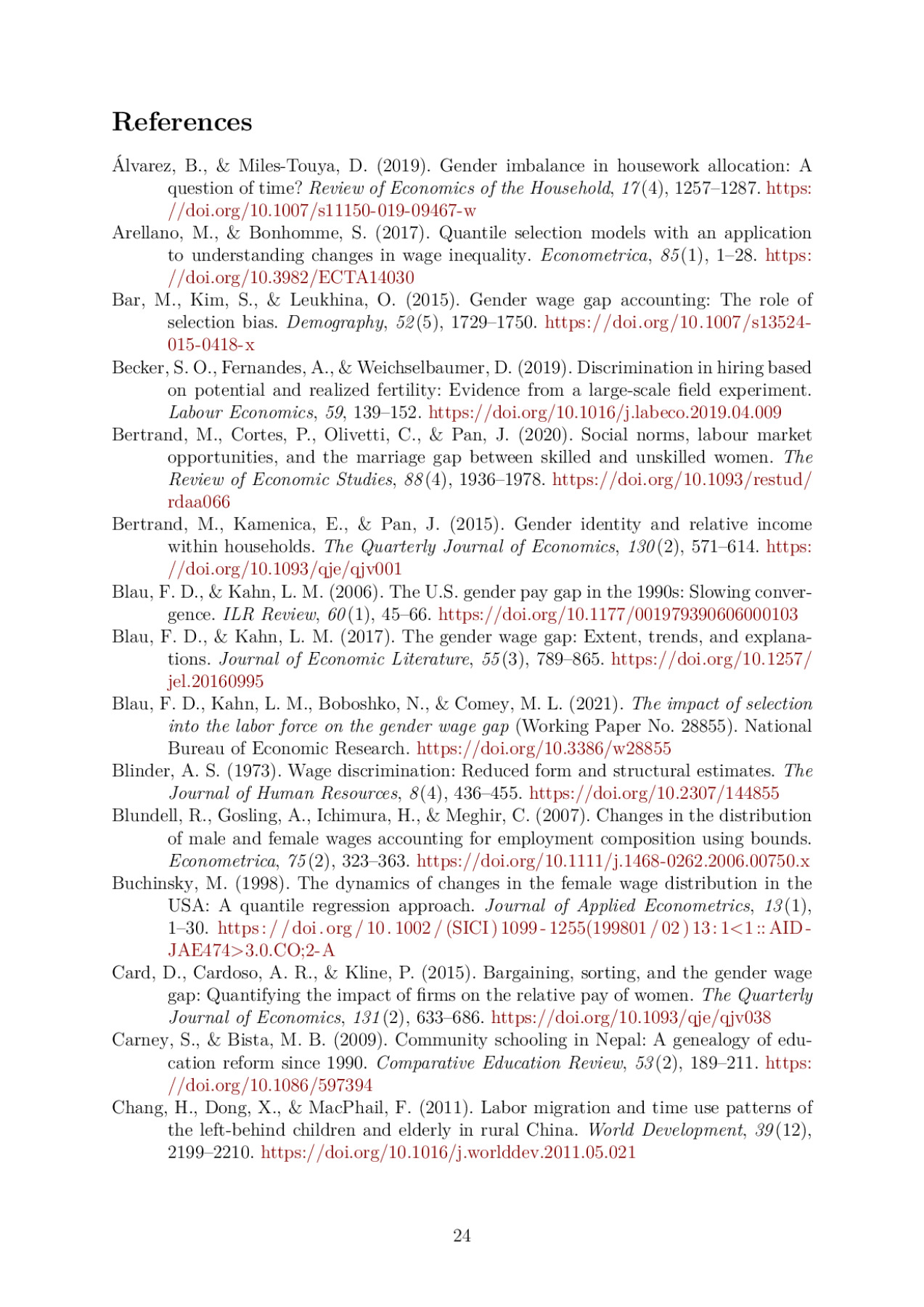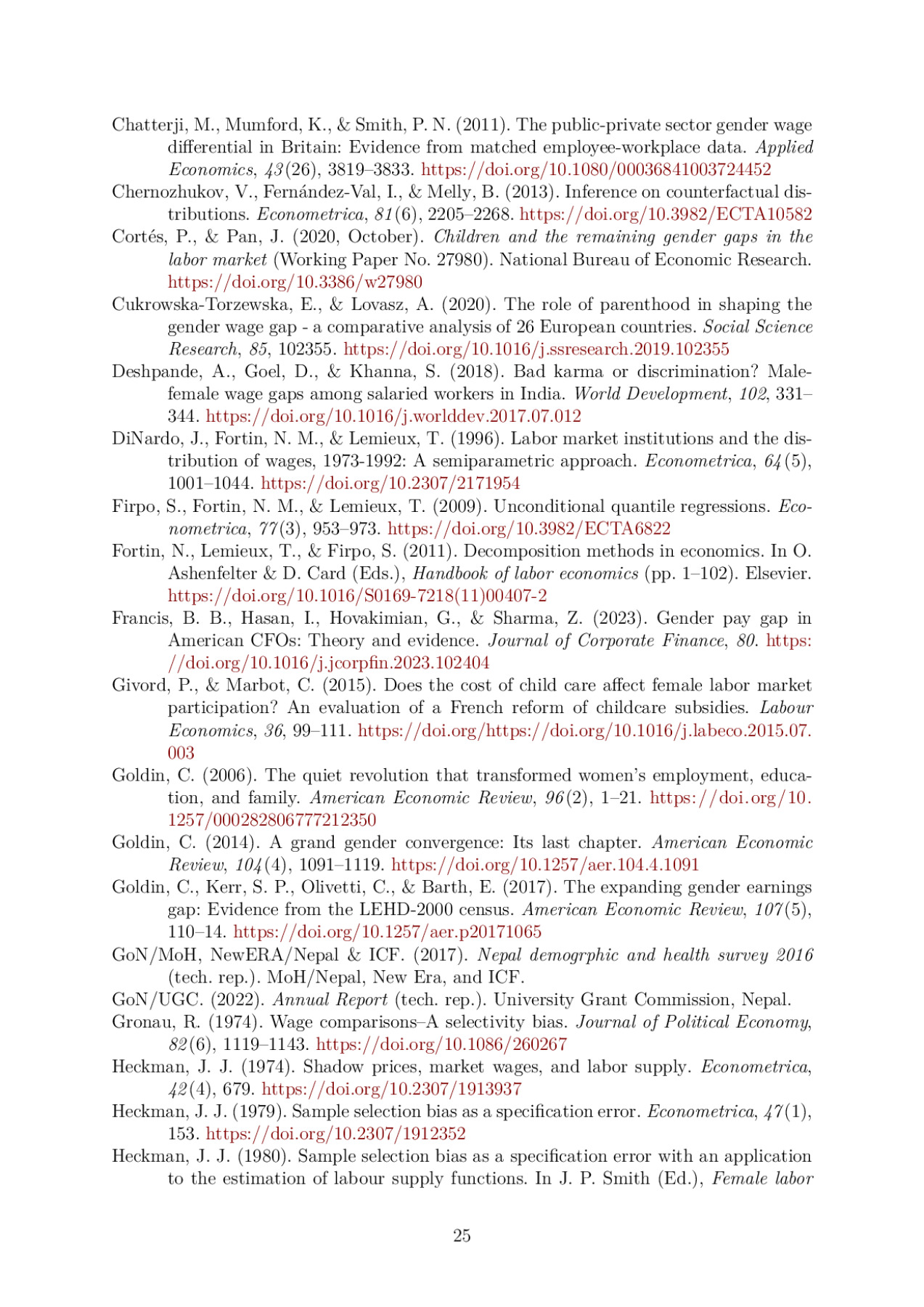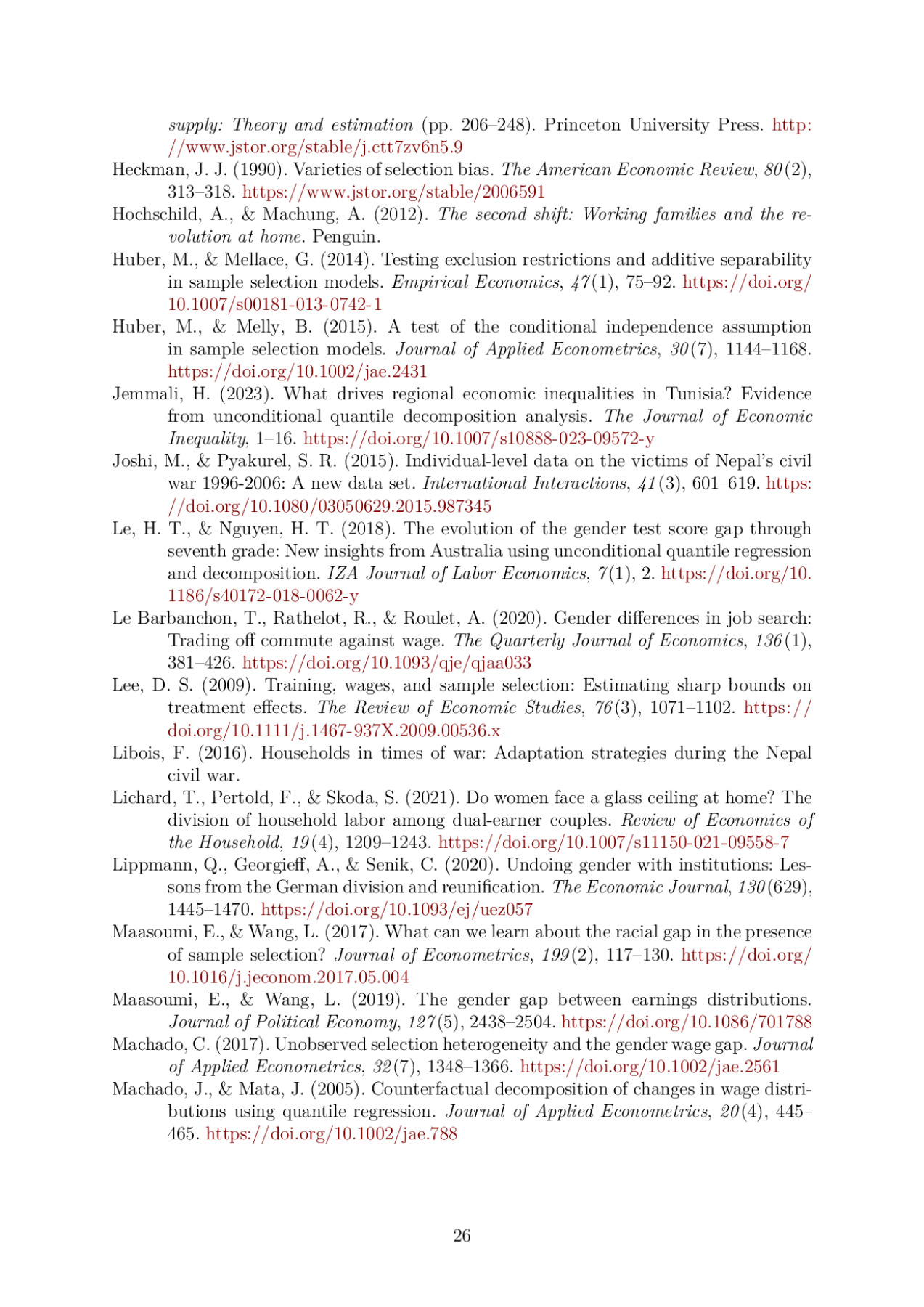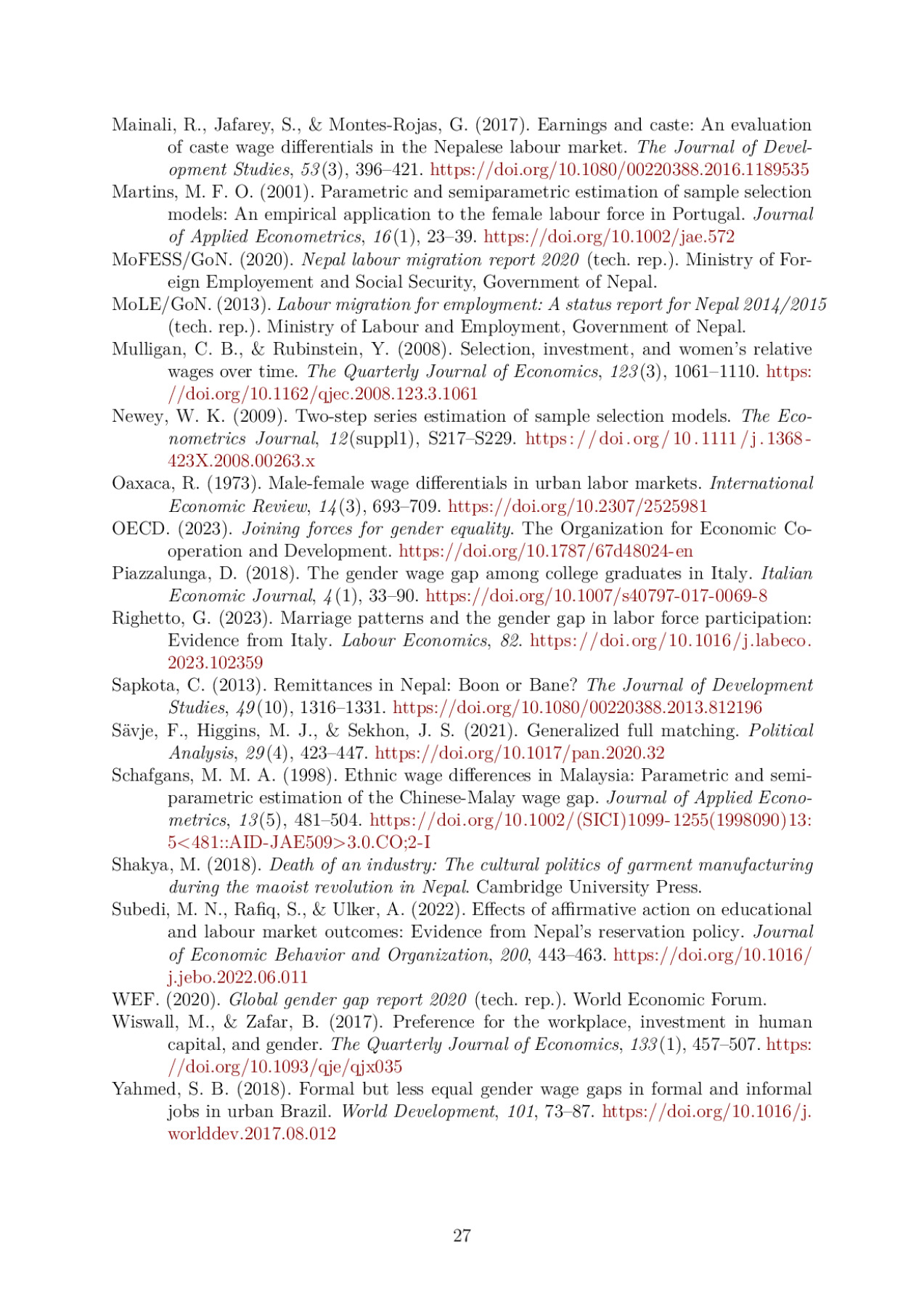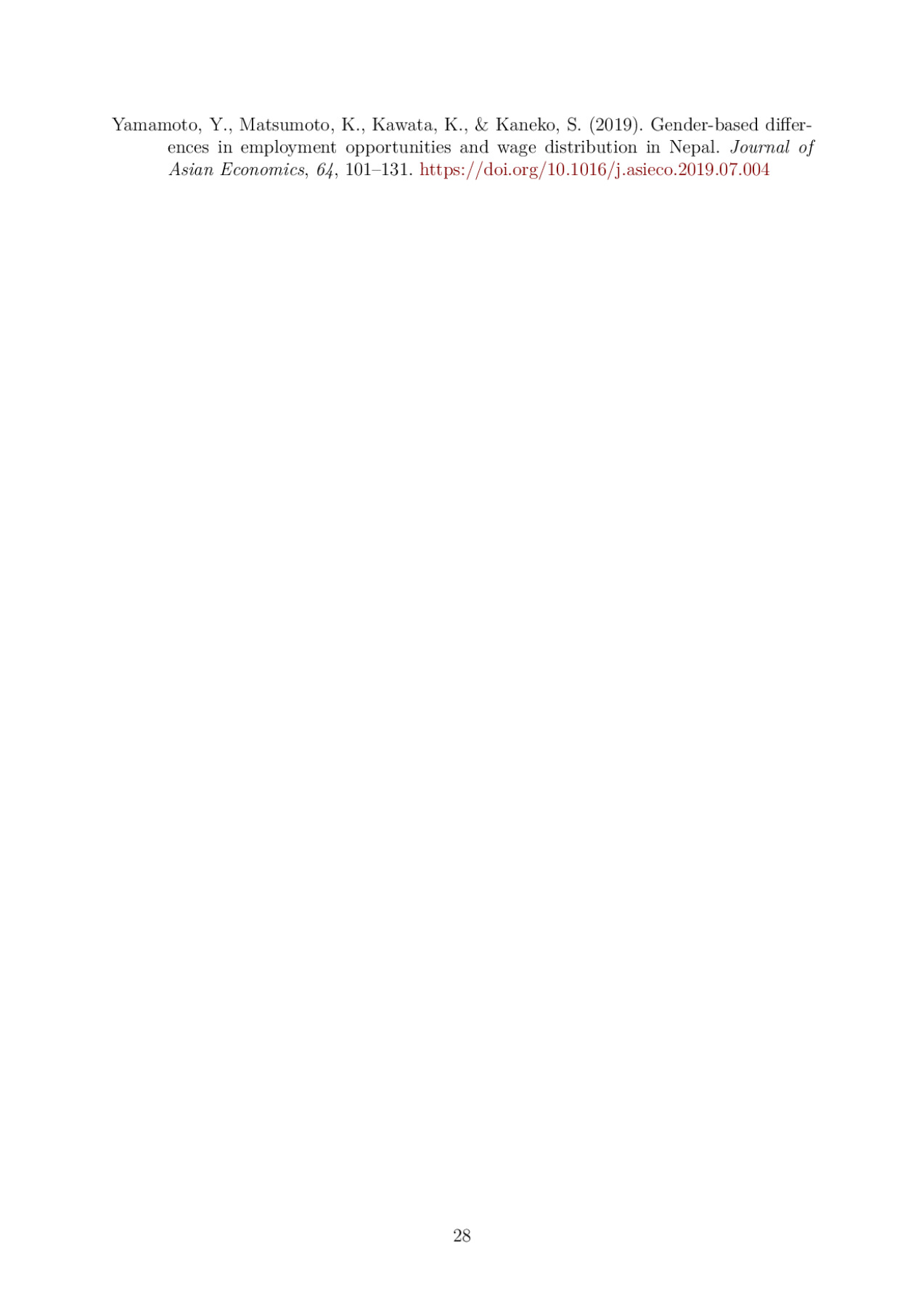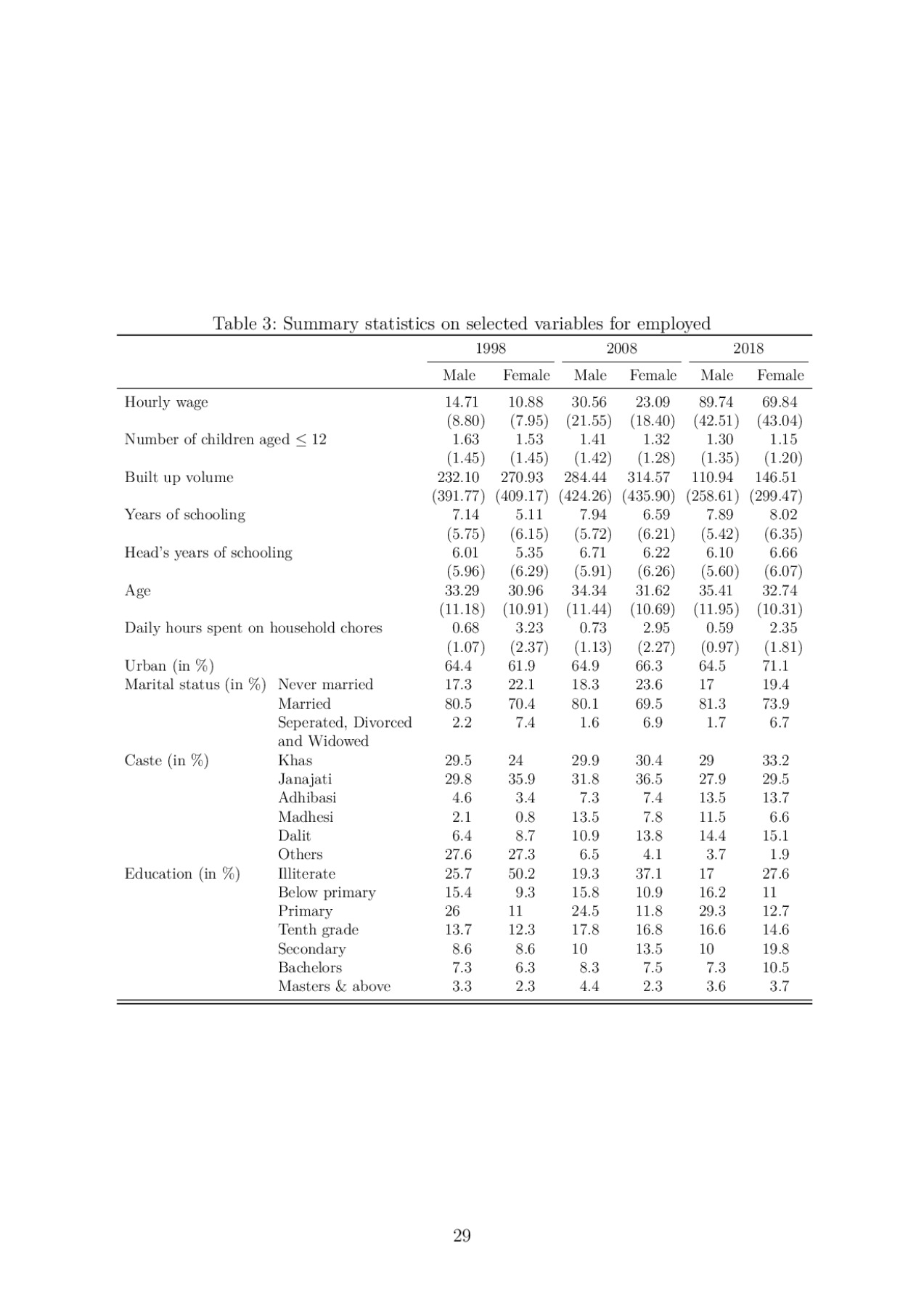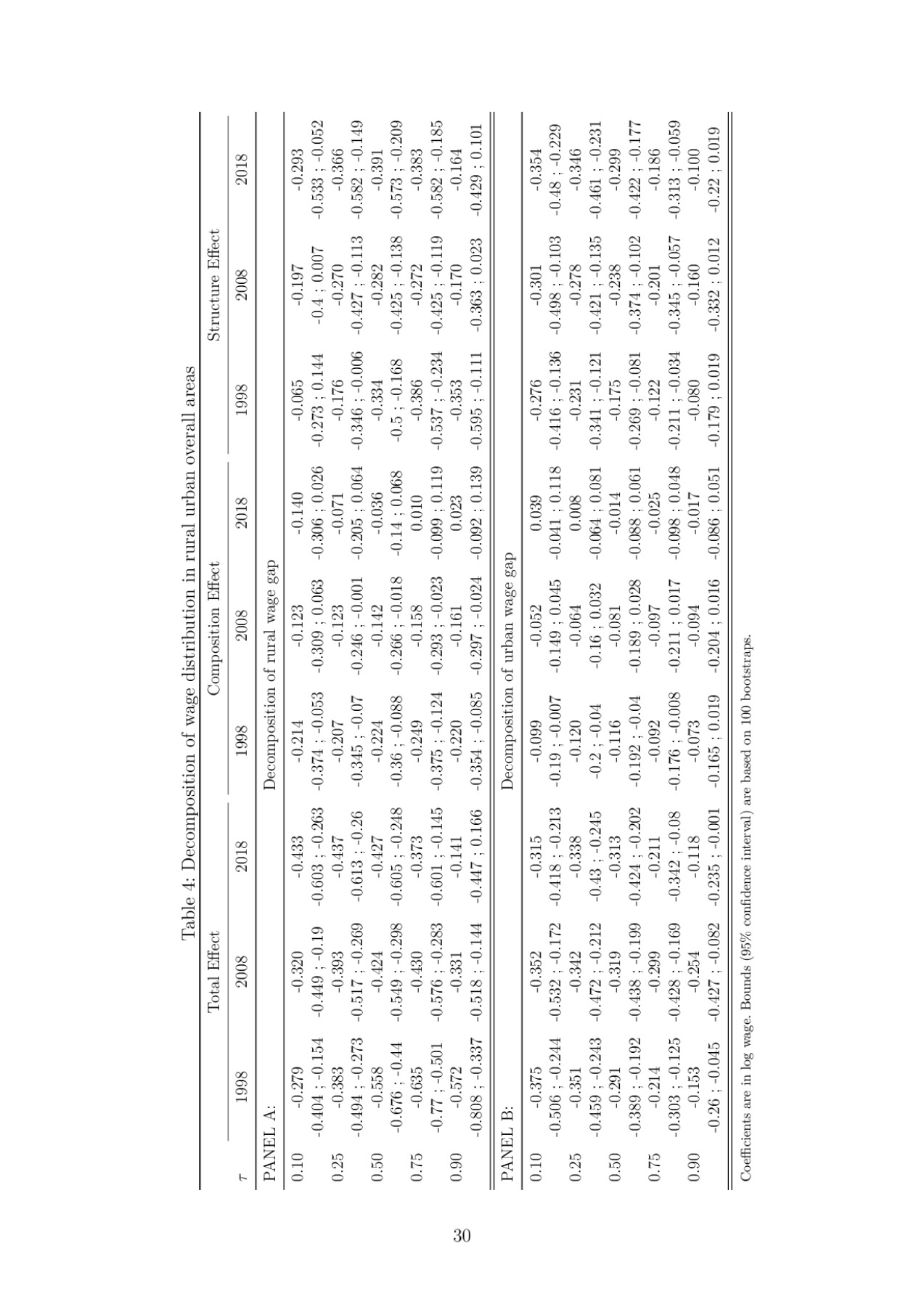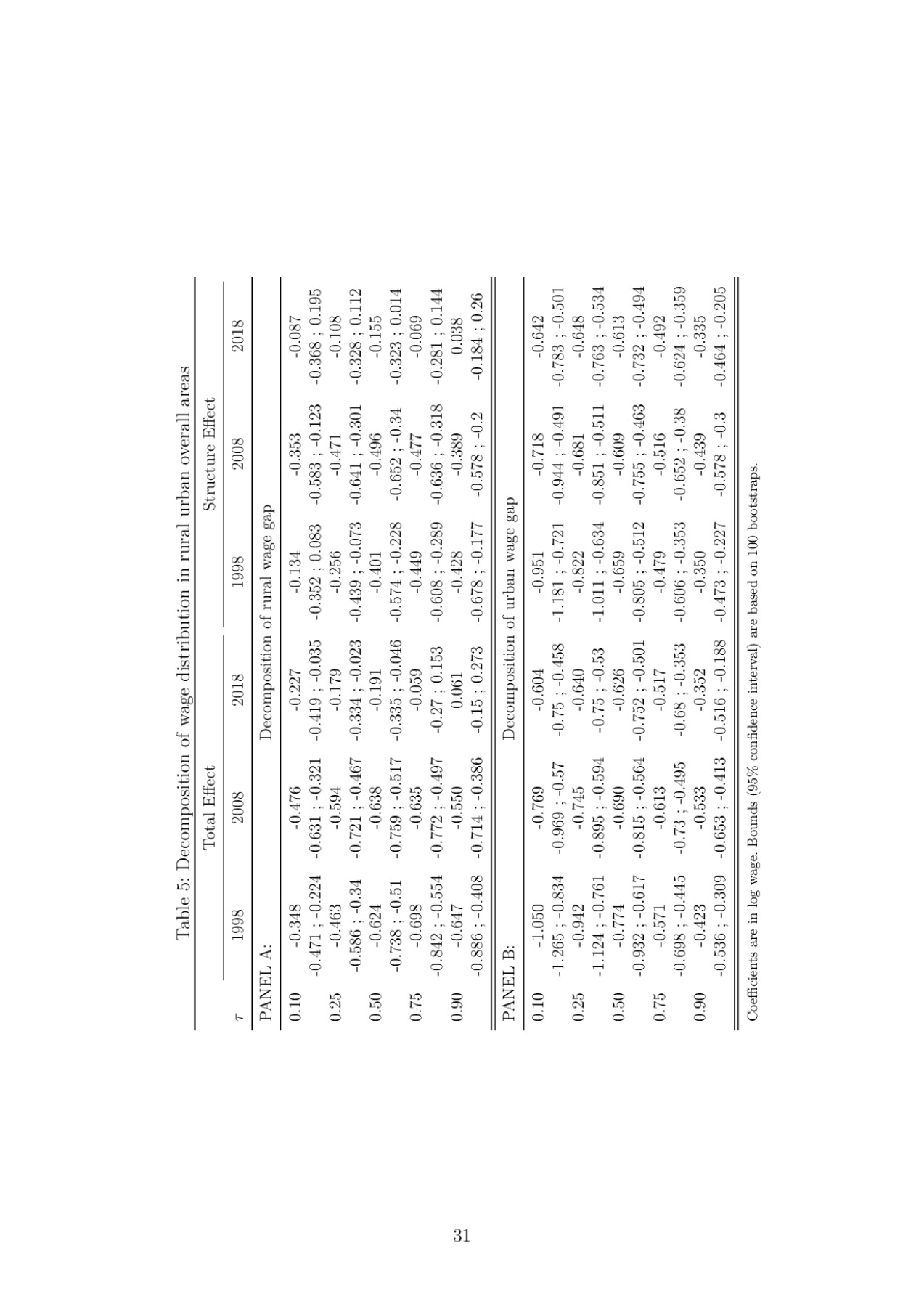2024 Asia Meeting, South/Central/West, Delhi, India: January, 2024
Structural divergence in gender wage gap distribution of Nepal
Manab Prakash, Resham Thapa-Parajuli, Tilak Kshetri, Sanjeet Singh Thapa
This paper studies the evolution of the gender wage gap and looks at its source
arising from the household-level dynamics. First, we decompose the selection-adjusted
gender wage gap distribution over three rounds of Nepal Labor Force Surveys
(1998-2018) and discuss disparities over time. Despite achieving parity in human
capital, the gap stagnates for below-median earners but converges at higher wage
tiers in urban and rural areas, showing a “sticky floor” nature. Moreover, by 2018,
the source of the gap diverged - almost all of the gap was due to unobserved
characteristics. Second, we test the implications of the household decision-making
model on female labor force participation using the 2011 national census. We find
that a higher spousal potential earning gap hinders women from being employed.
Also, females allocate substantially more time to household chores, are indifferent to
arising from the household-level dynamics. First, we decompose the selection-adjusted
gender wage gap distribution over three rounds of Nepal Labor Force Surveys
(1998-2018) and discuss disparities over time. Despite achieving parity in human
capital, the gap stagnates for below-median earners but converges at higher wage
tiers in urban and rural areas, showing a “sticky floor” nature. Moreover, by 2018,
the source of the gap diverged - almost all of the gap was due to unobserved
characteristics. Second, we test the implications of the household decision-making
model on female labor force participation using the 2011 national census. We find
that a higher spousal potential earning gap hinders women from being employed.
Also, females allocate substantially more time to household chores, are indifferent to
their employment status, and effectively experience a “double burden” of work when
employed. These results point out that improving human capital is an exhausted
strategy. As long as females’ participation is a derivative of males’ earning potential
and time allocations are skewed against females, the convergence of the gap remains
challenging.
employed. These results point out that improving human capital is an exhausted
strategy. As long as females’ participation is a derivative of males’ earning potential
and time allocations are skewed against females, the convergence of the gap remains
challenging.
Versions available:
Preview
